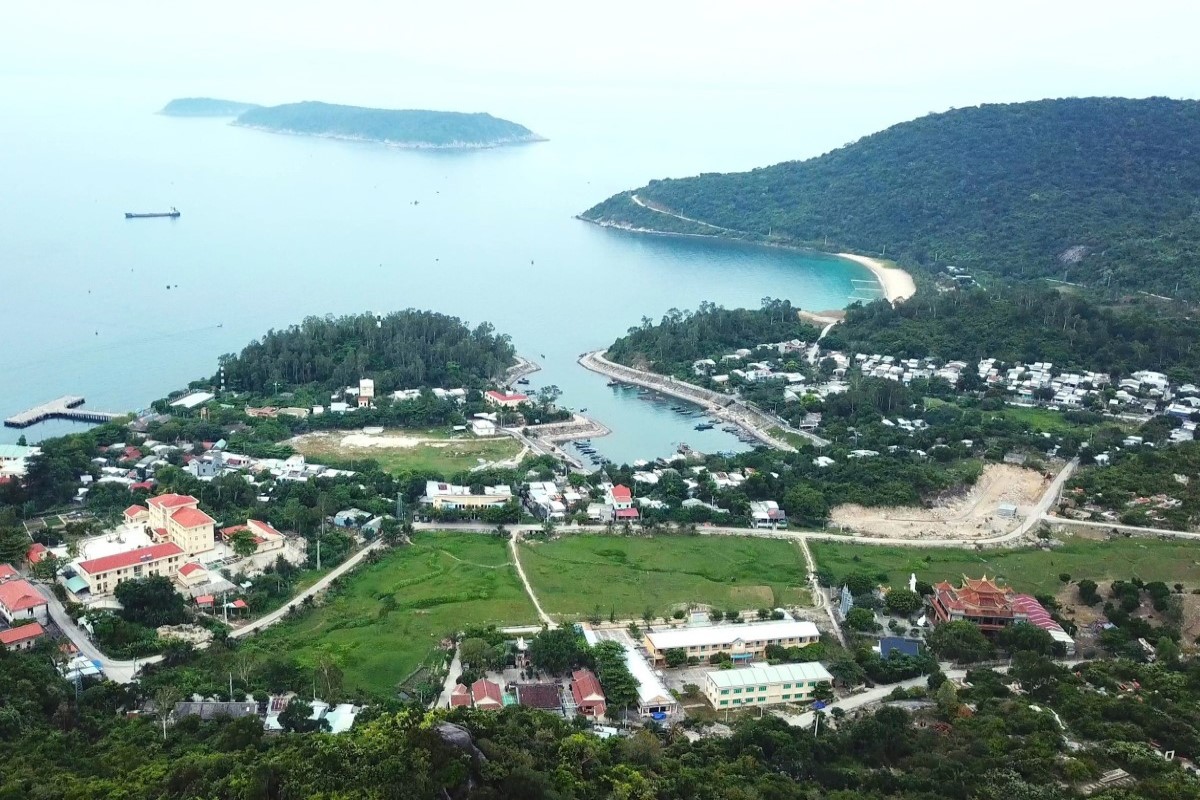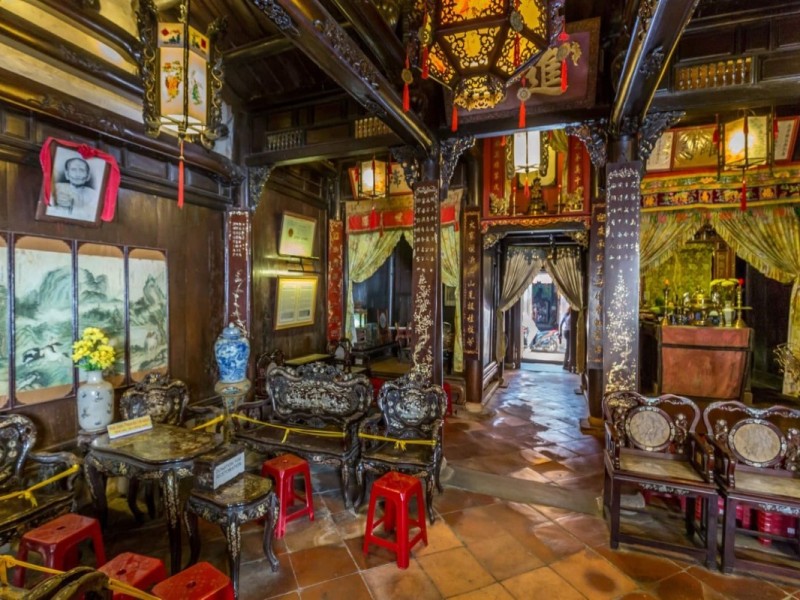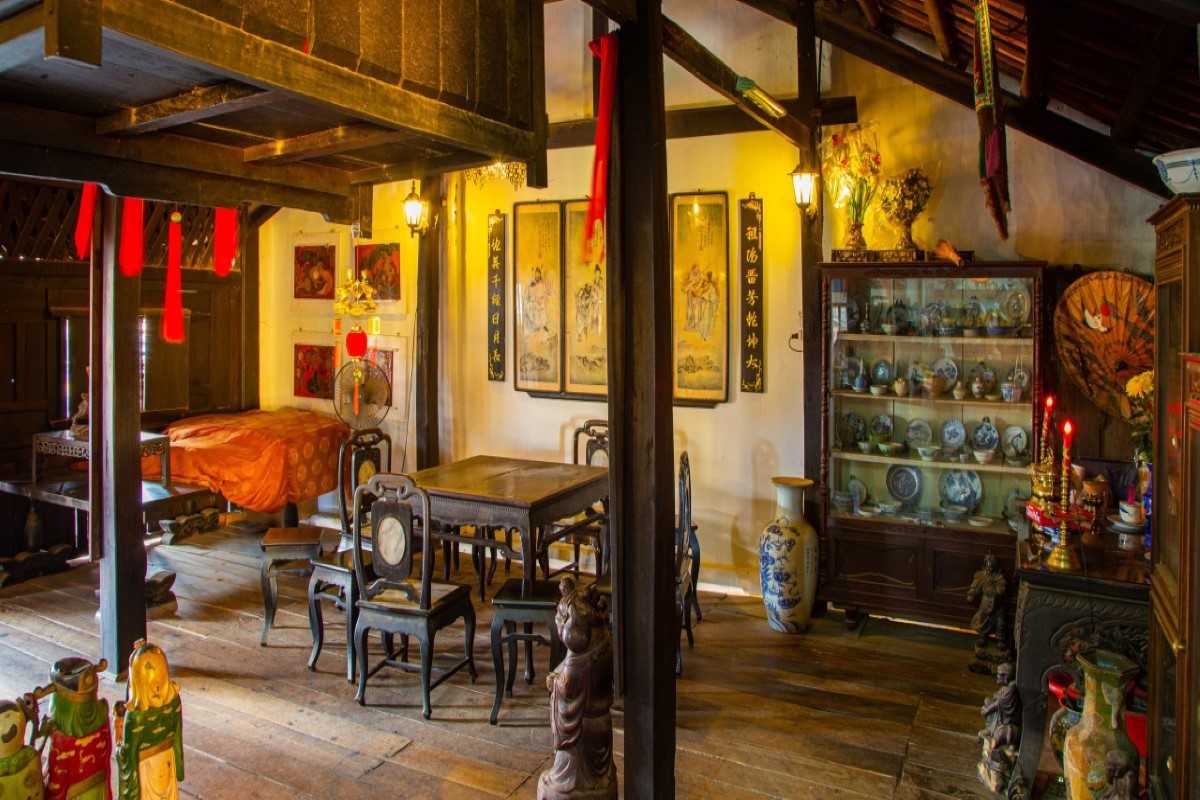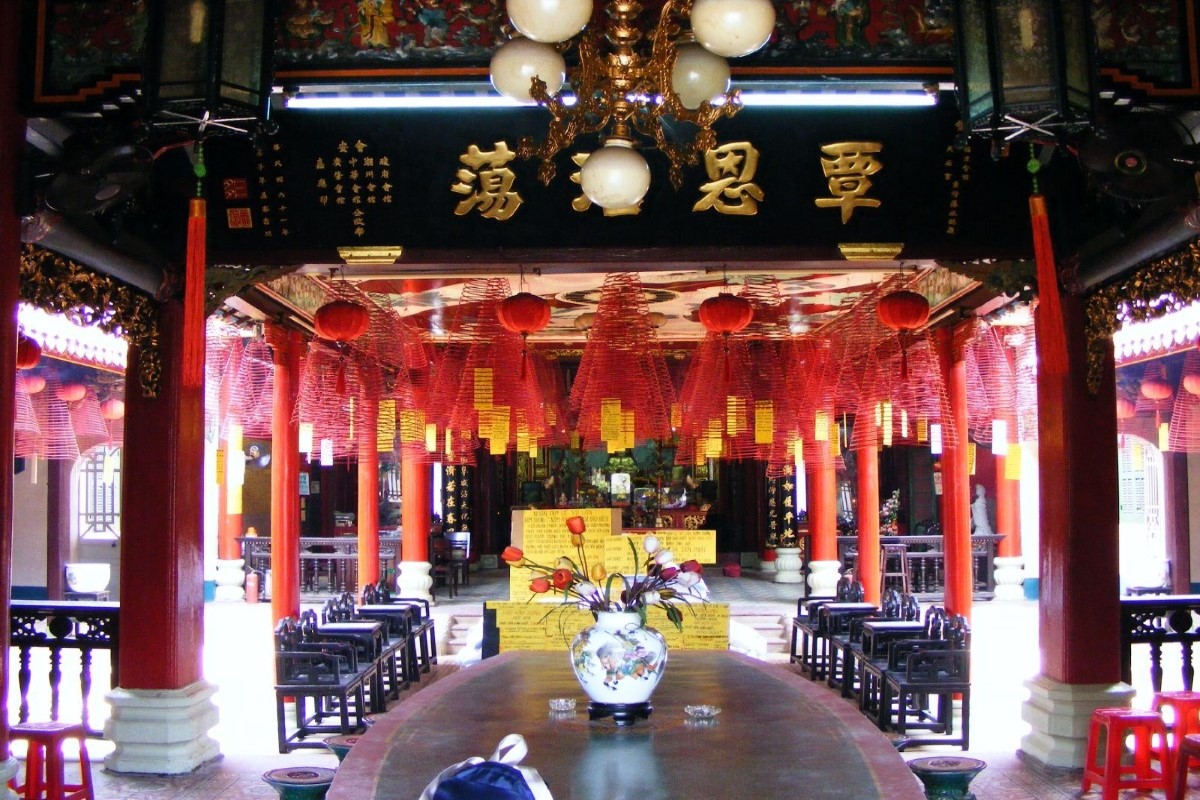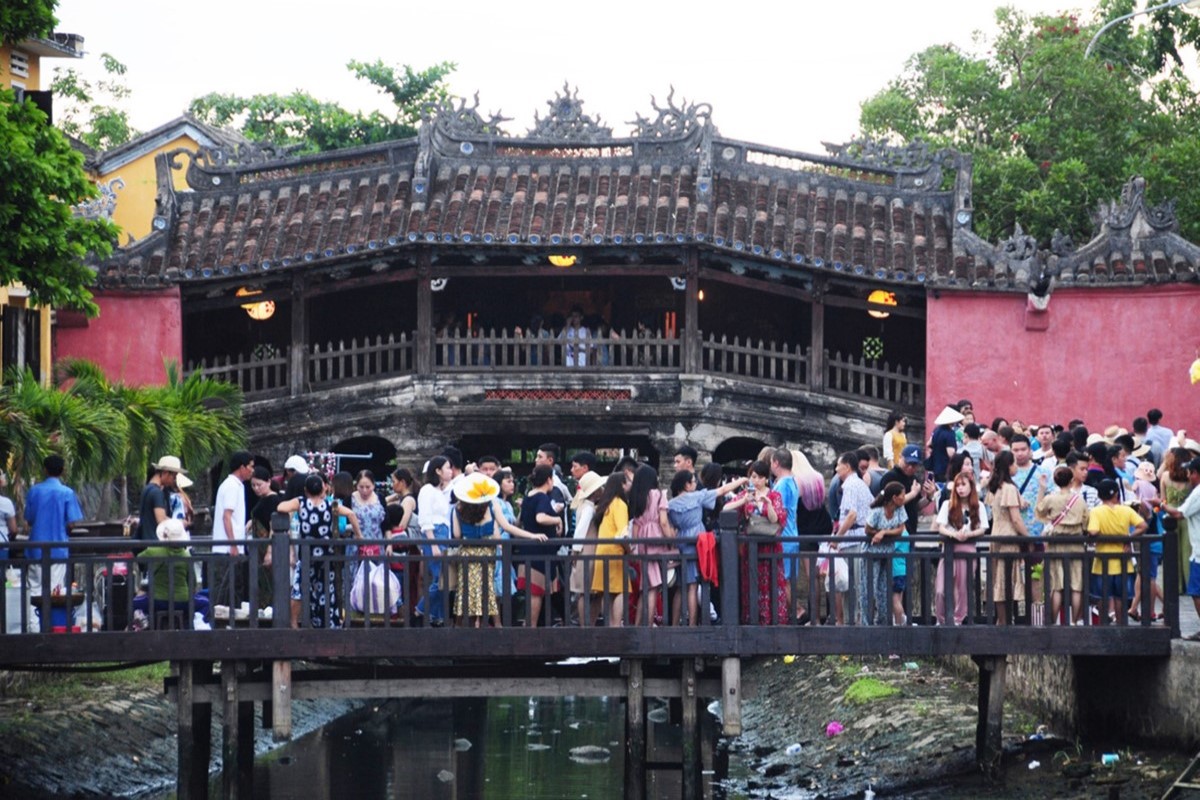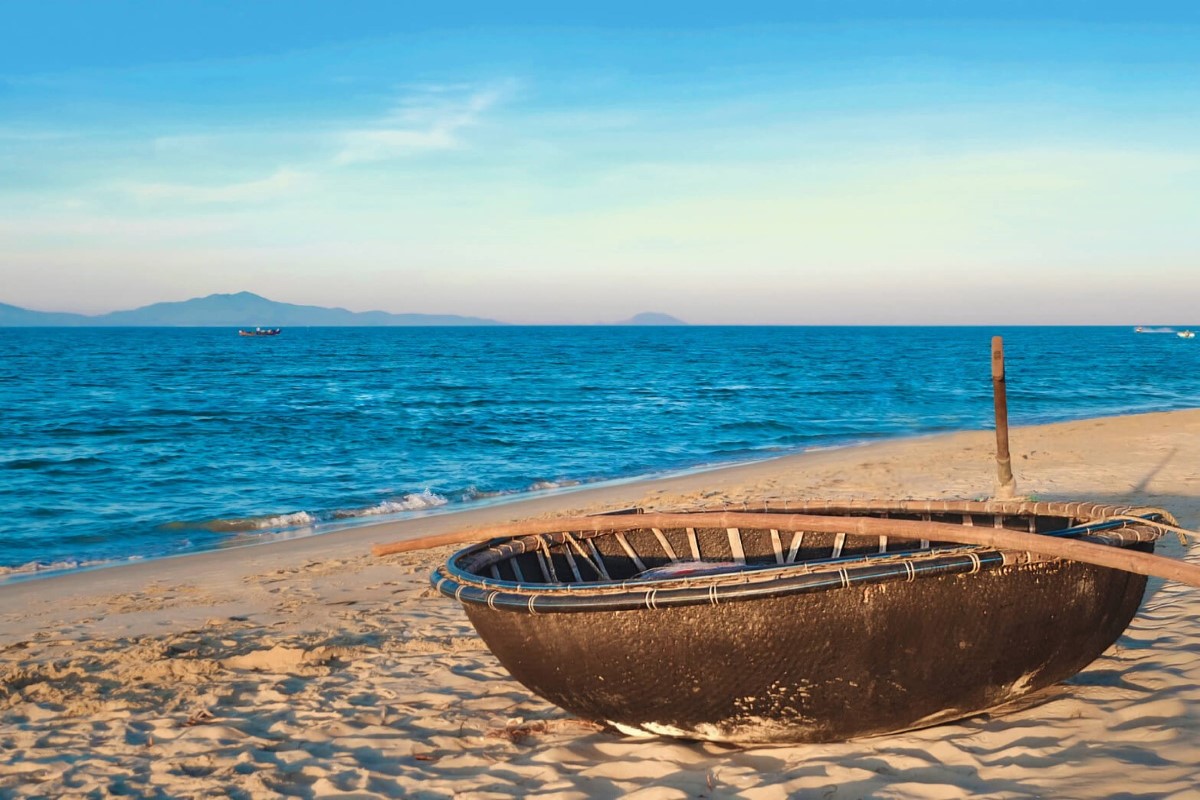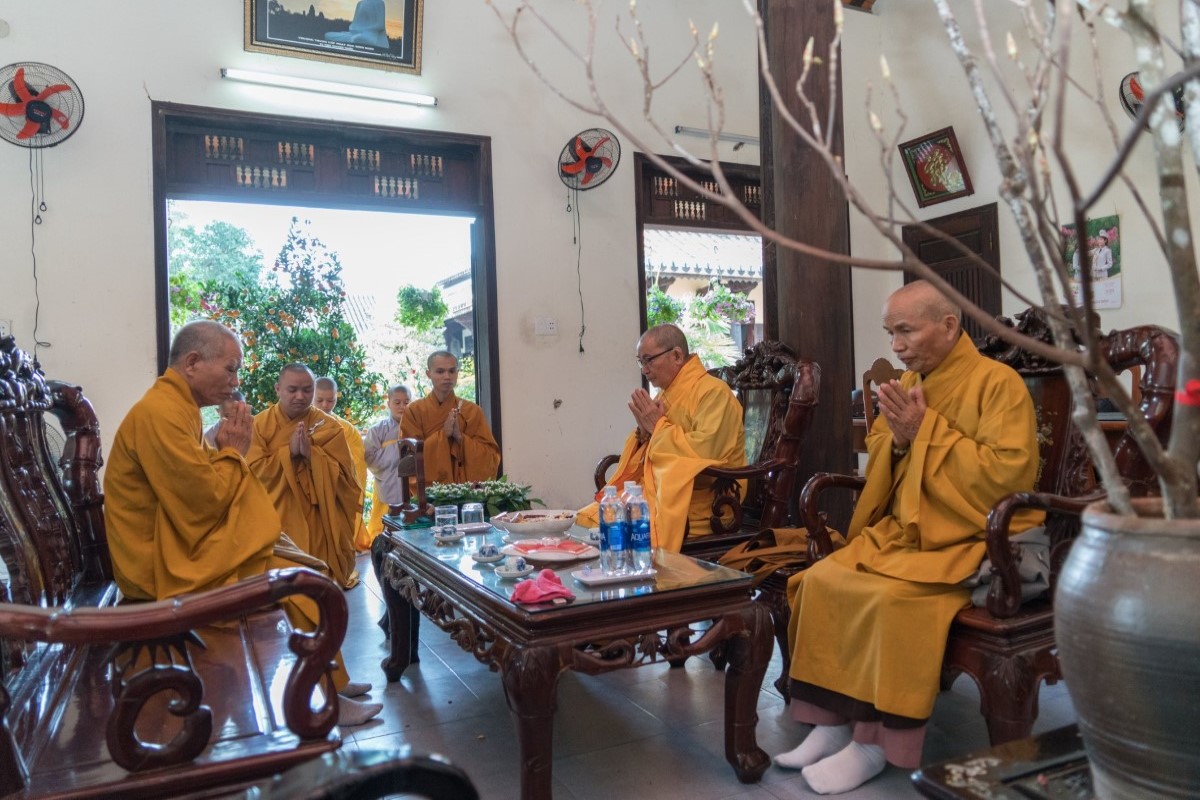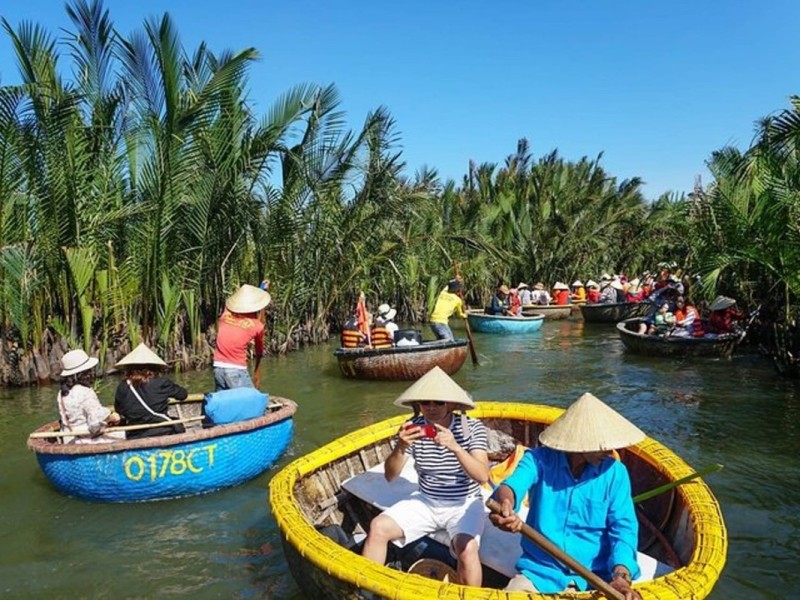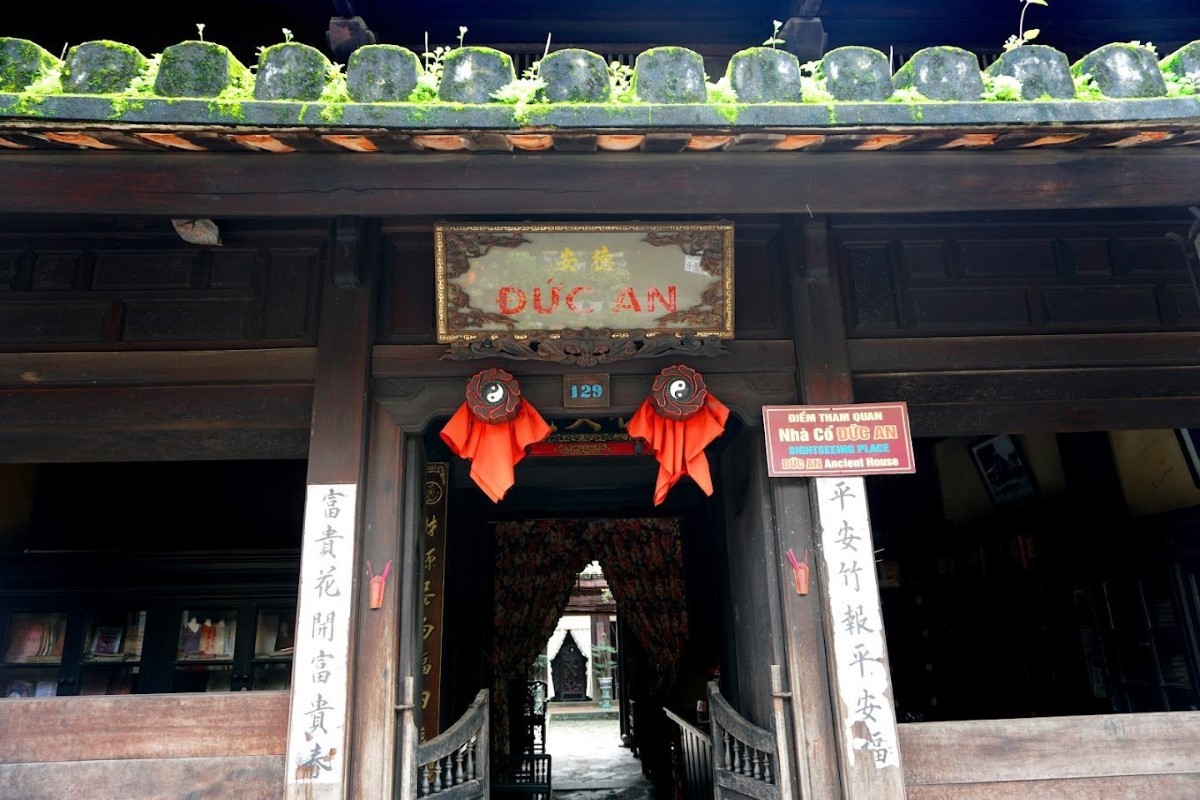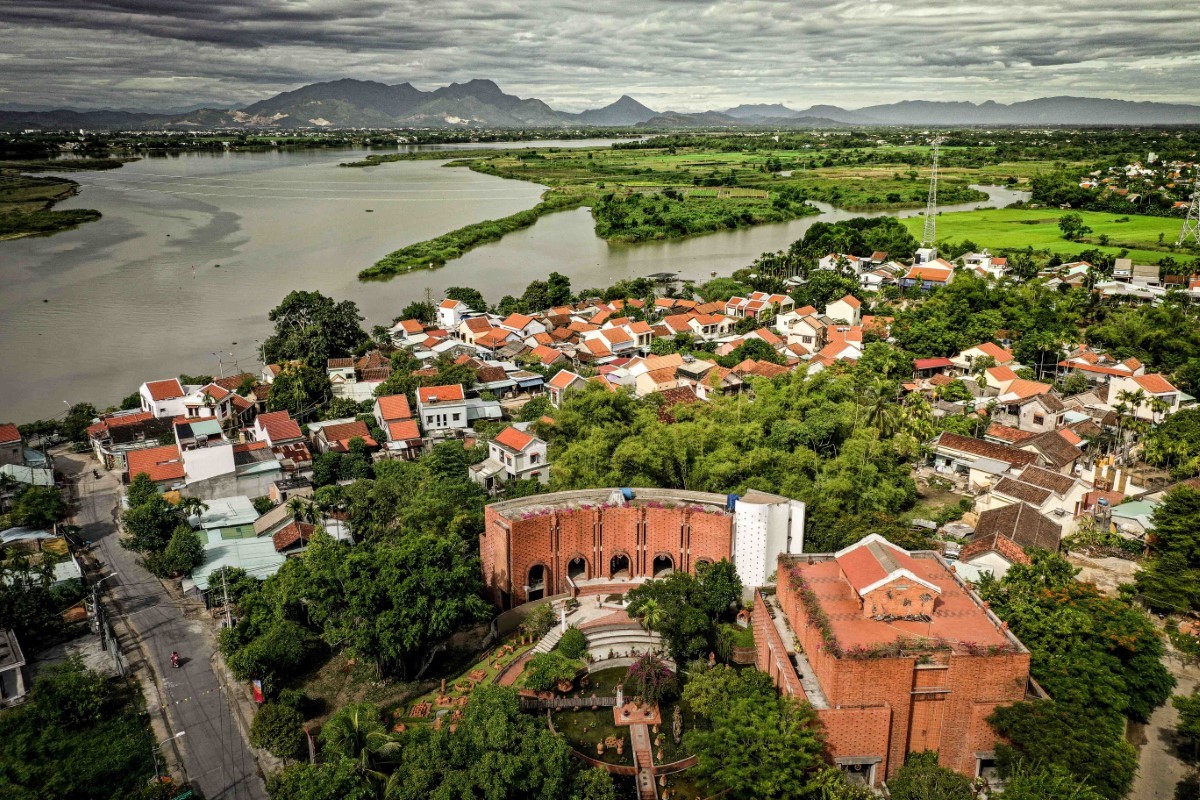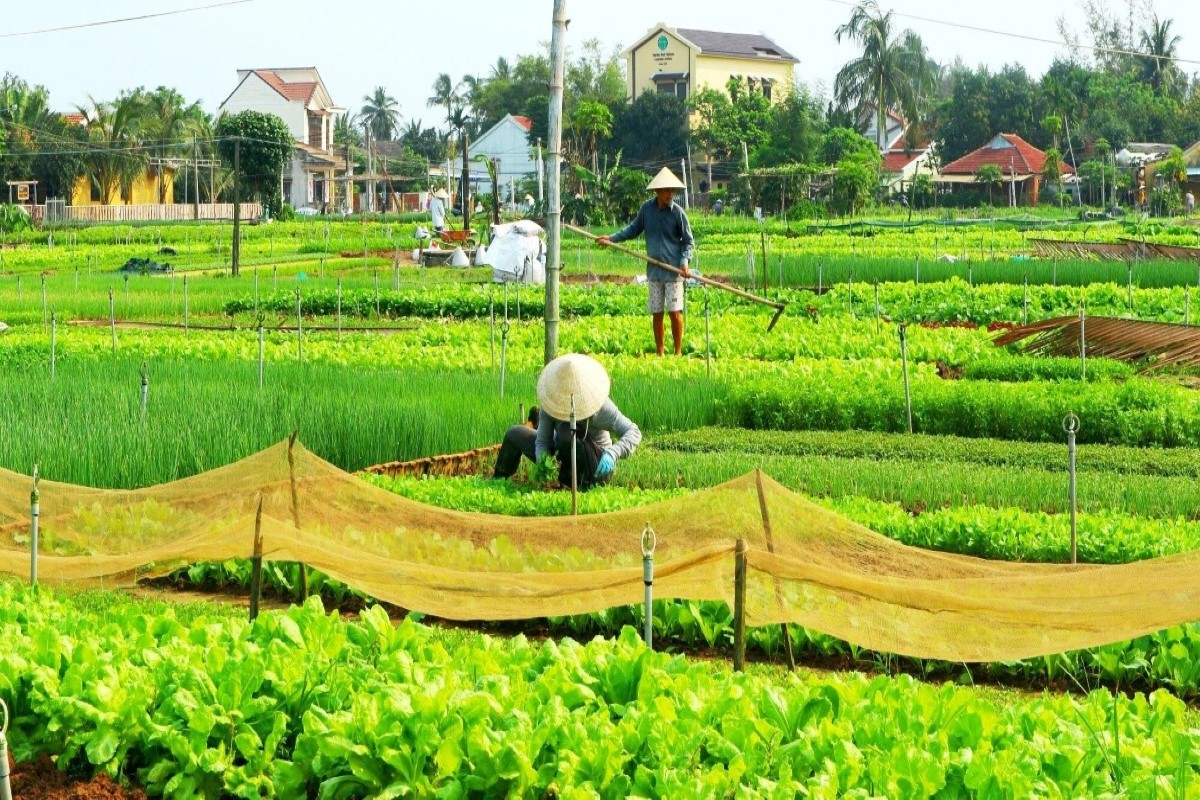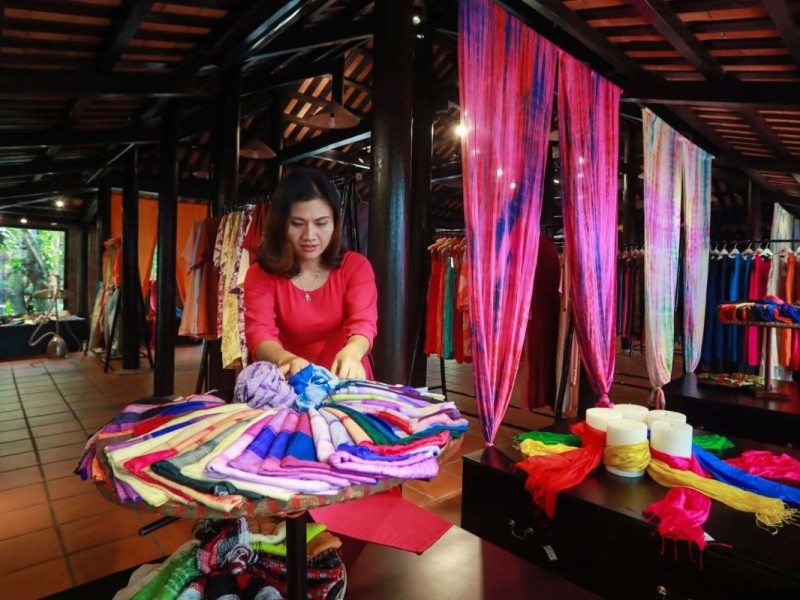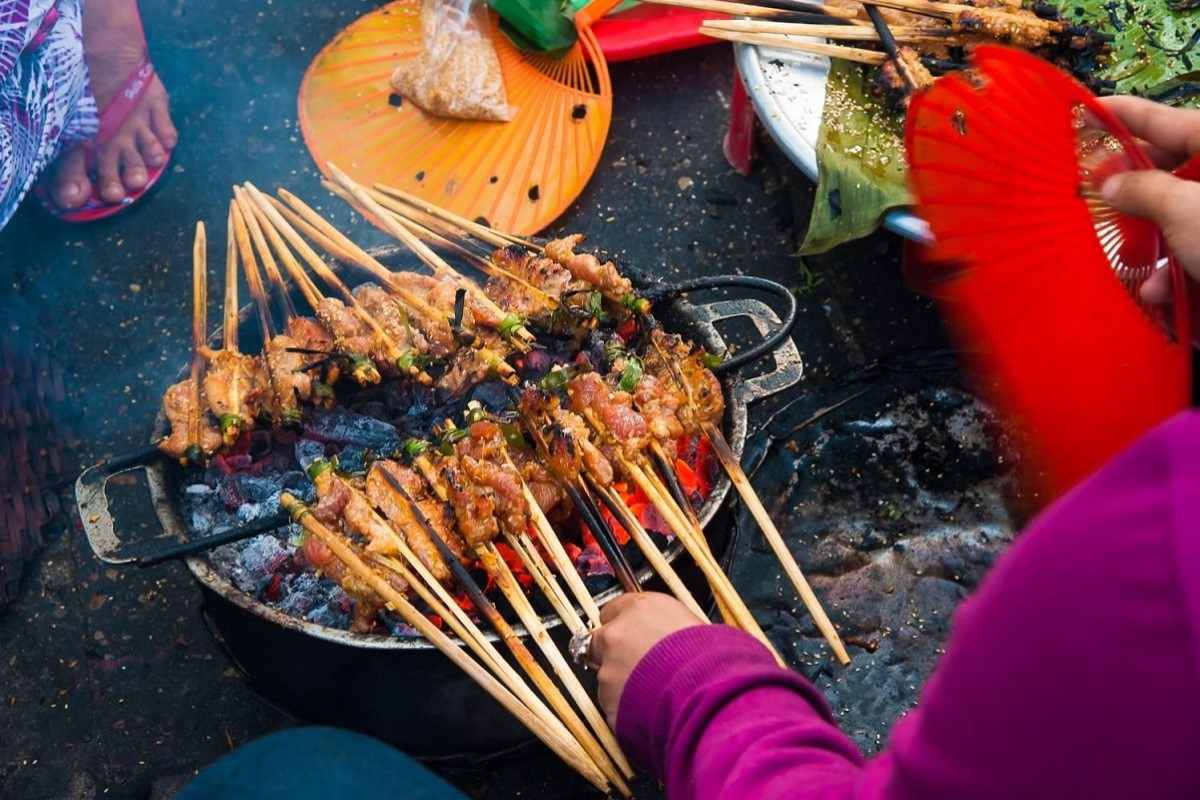My Son Sanctuary Travel Guide: History & Practical Tips
My Son Sanctuary is a historic UNESCO World Heritage site in Vietnam that showcases the unique Cham civilization’s ancient temple complex. It offers visitors an authentic cultural experience through well-preserved ruins, distinctive Cham architecture, and scenic natural surroundings.
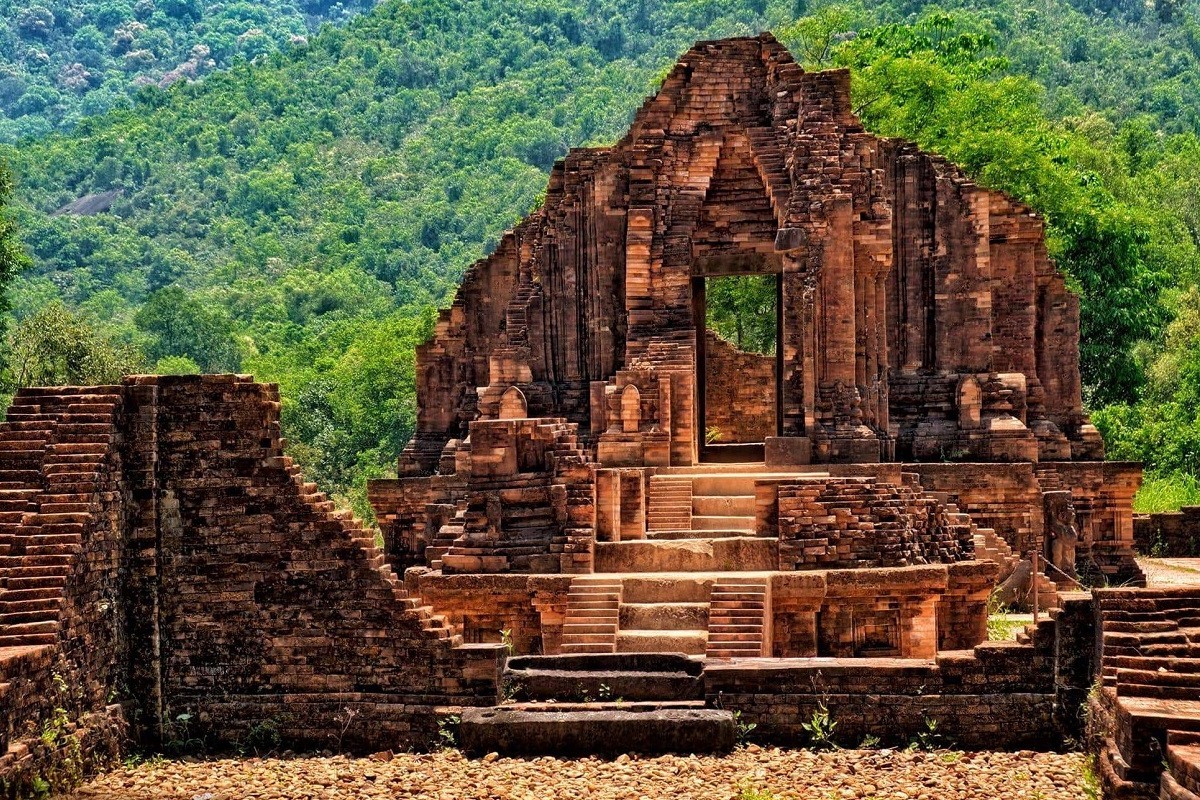
Introduction to My Son Sanctuary
My Son Sanctuary is a remarkable UNESCO World Heritage site located in Vietnam, known for its ancient Cham ruins nestled within a lush jungle setting. This historic temple complex served as the spiritual and cultural heart of the Champa Kingdom, showcasing intricate architecture and a unique blend of Indian and Southeast Asian influences. Visitors to My Son Sanctuary gain insight into a lost civilization through its well-preserved temples, carvings, and sacred grounds that span centuries.
Nestled near the towns of Hoi An and Da Nang, My Son Sanctuary stands as a testament to the religious devotion and artistic achievements of the Cham people. Its significance lies not only in its architectural grandeur but also in its deep cultural and historical importance as a symbol of ancient Southeast Asian heritage. Exploring the site reveals layers of history, from its origins in the 4th century to its status today as a protected archaeological treasure.
This introduction will guide you through the key aspects of My Son Sanctuary, explaining why it deserves a spot on your travel itinerary. Whether you are drawn by its spiritual significance, architectural beauty, or cultural heritage, this site offers a rich and immersive experience.
Plan your visit to My Son Sanctuary to uncover the fascinating stories etched into its stones and to appreciate one of Vietnam’s most treasured historical sites.
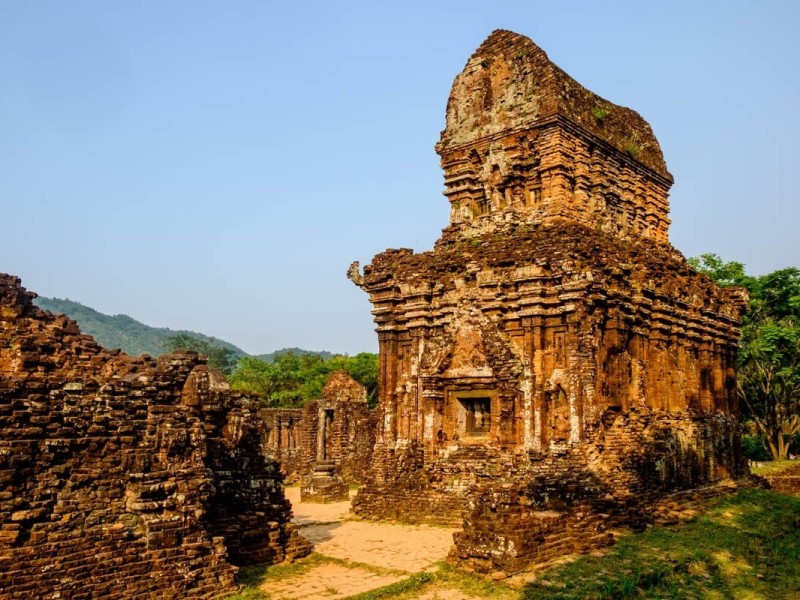
Overview of the Site
My Son Sanctuary overview reveals an extensive complex of temple ruins set in a tranquil valley surrounded by dense jungle. The site represents the spiritual heart of the ancient Champa Kingdom, with temple clusters spread over approximately two square kilometers. Visitors approach the sanctuary through winding paths that bring you close to the intricate red brick towers and stone carvings. The proximity to Hoi An (about 40 km away) and Da Nang (around 70 km) makes it an accessible yet peaceful escape from busy city life.
The sanctuary’s layout includes several distinct clusters, each containing structures with unique religious and architectural functions. The site is famed for its brickwork techniques and sandstone sculptures that survived centuries of weather and conflict. Exploring My Son Sanctuary offers a journey through time and space, immersing you in the rich cultural tapestry of Southeast Asia.
By understanding the site’s physical and cultural context, you can better appreciate the stories behind the ruins and the civilization that created them.
Plan your visit to My Son Sanctuary with this overview in mind to fully grasp its scale and significance.
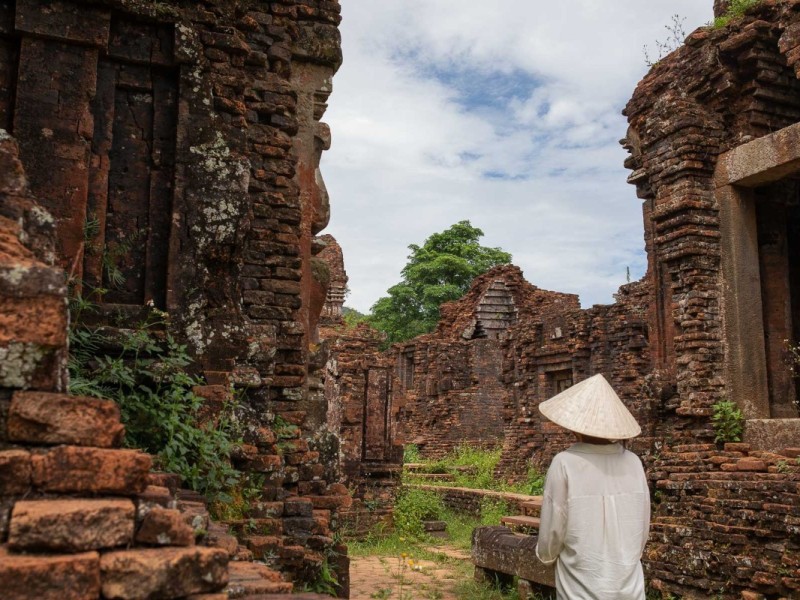
Significance as a UNESCO World Heritage Site
The designation of My Son Sanctuary as a UNESCO World Heritage Site highlights its outstanding universal value as a cultural and archaeological treasure. This status recognizes the site’s importance in illustrating the development of the Champa Kingdom and the exchange of art and culture between India and Southeast Asia.
The sanctuary meets several UNESCO criteria, including its testimony to a civilization that has vanished and its exceptional architectural and artistic achievements. Preservation efforts ensure the protection of these ancient temples, which represent spiritual devotion through intricate stone carvings and symbolic layouts.
Visiting the UNESCO World Heritage Site My Son offers a rare opportunity to connect with history on a global scale and understand the site's role in Southeast Asian heritage. The designation also emphasizes the need for responsible tourism to safeguard this legacy.
Make your visit to My Son Sanctuary mindful of its heritage status and the ongoing efforts to preserve this unique site.
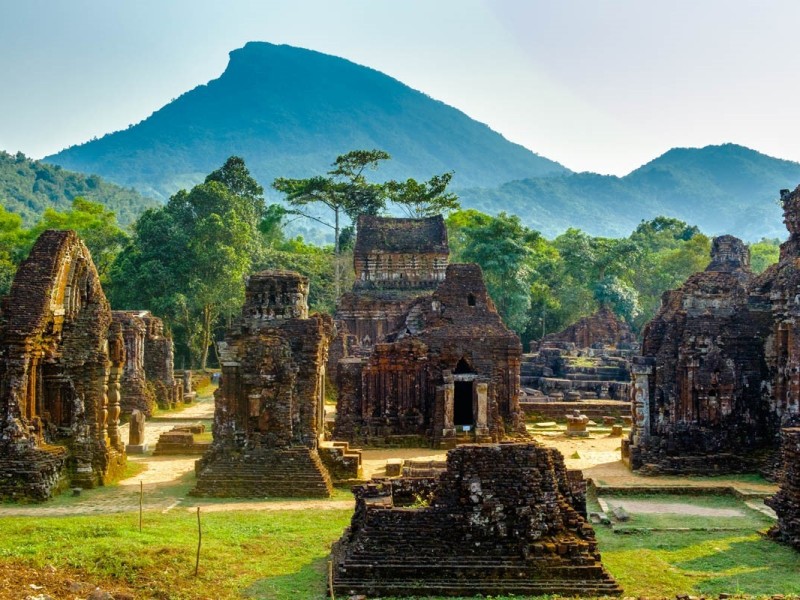
Unique Features and Architectural Highlights
One of the most captivating aspects of My Son Sanctuary is its distinctive Cham architectural style, which features red brickwork constructed without mortar and elaborate sandstone carvings. The temples are designed following Hindu religious principles, dedicated primarily to the god Shiva.
Key architectural elements include the Kalan (sanctuary tower), mandapa (assembly hall), and gopura (entrance gate), each showcasing unique craftsmanship. The influence of Indian art is evident in the bas-reliefs and sculptures, which depict mythological stories and sacred symbols such as Apsaras and Kala motifs.
These features highlight the advanced engineering and artistic skills of the Cham civilization, making the site a treasure trove for those interested in ancient architecture and religious art.
Explore the architectural wonders of My Son Sanctuary to appreciate the craftsmanship that has survived through centuries.
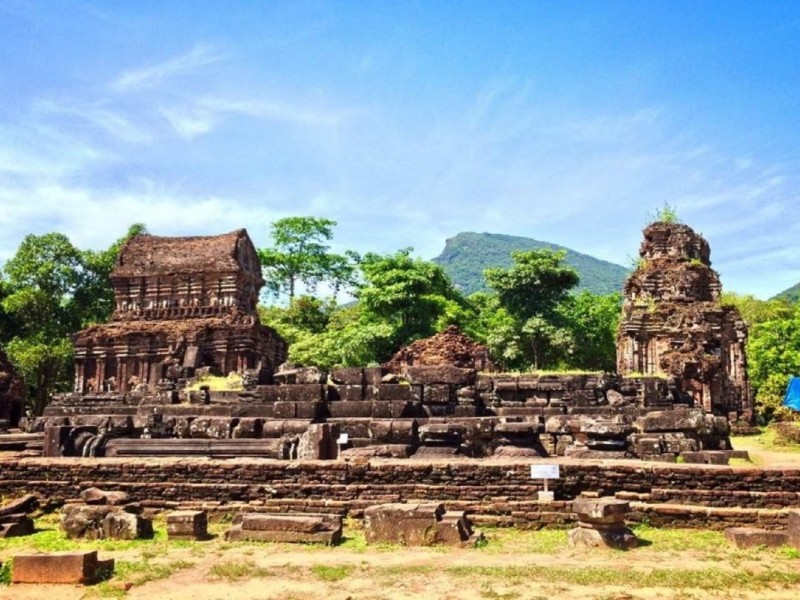
Is My Son Sanctuary Worth Visiting?
My Son Sanctuary offers travelers a unique glimpse into the lost Cham civilization through its awe-inspiring ruins and serene natural setting. This destination combines architectural grandeur with rich cultural immersion, providing a peaceful retreat away from crowded tourist hubs. While the site’s tropical climate and occasional crowds can pose challenges, careful planning ensures a rewarding experience.
As you consider adding My Son Sanctuary to your travel itinerary, weigh these benefits against practical travel tips to make an informed decision and enjoy a memorable visit.
Plan your journey to My Son Sanctuary and discover the captivating history and tranquil beauty it offers.
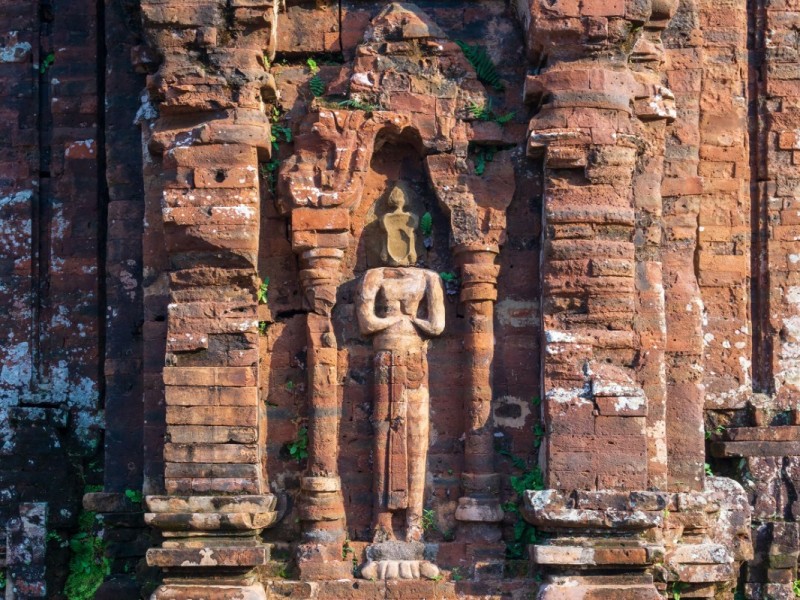
Key Reasons to Include My Son in Your Itinerary
Visiting My Son Sanctuary means stepping into a world of ancient architecture and spiritual depth. The temple complex’s intricate brickwork and detailed carvings showcase centuries of craftsmanship, inviting you to appreciate its historical magnitude. Beyond the ruins, the site offers an immersive cultural experience that reveals the rituals, beliefs, and artistic expressions of the Cham people.
Moreover, My Son Sanctuary provides peaceful spaces for reflection amidst nature, making it ideal for travelers seeking both cultural enrichment and quiet exploration. These highlights make it a compelling addition to your travel plans.
Include My Son Sanctuary in your itinerary to experience architectural marvels, cultural depth, and serene surroundings.
Architectural Grandeur & Historical Depth
The vast scale of My Son Sanctuary’s temple complex inspires awe, with its carefully constructed red brick towers standing tall without mortar. The intricate details in the brickwork and sandstone carvings reveal the advanced skills of the Cham builders and their devotion to spiritual architecture. Walking through the ruins, you can almost hear echoes of ancient ceremonies that once filled these spaces.
This historical monument not only reflects the power and sophistication of the Champa Kingdom but also stands as a testament to Southeast Asia’s rich architectural heritage.
Admire the architectural marvels of My Son Sanctuary to connect deeply with its historical significance.
Cultural Immersion & Understanding
At My Son Sanctuary, visitors gain insight into the spiritual traditions of the Cham civilization. The site’s carvings and sculptures depict Hindu rituals, sacred symbols, and mythological stories, offering a window into a rich cultural tapestry. Learning about these practices helps you appreciate the religious symbolism embedded in the ruins.
This cultural experience allows you to connect with the beliefs and artistry that shaped the ancient kingdom, enriching your understanding beyond the visual grandeur.
Engage with the spiritual heritage of My Son Sanctuary to enrich your travel experience.
Tranquility Away from the Crowds
Unlike more frequented tourist destinations, My Son Sanctuary offers a peaceful atmosphere where you can explore quiet ruins set amidst lush nature. Early morning visits or off-peak times reveal a serene environment, perfect for contemplation and photography. The gentle sounds of wildlife and rustling leaves frame your journey through this timeless landscape.
This tranquil setting makes My Son Sanctuary ideal for travelers seeking solitude and a deeper connection with history.
Find your moment of calm and discovery at My Son Sanctuary during your visit.
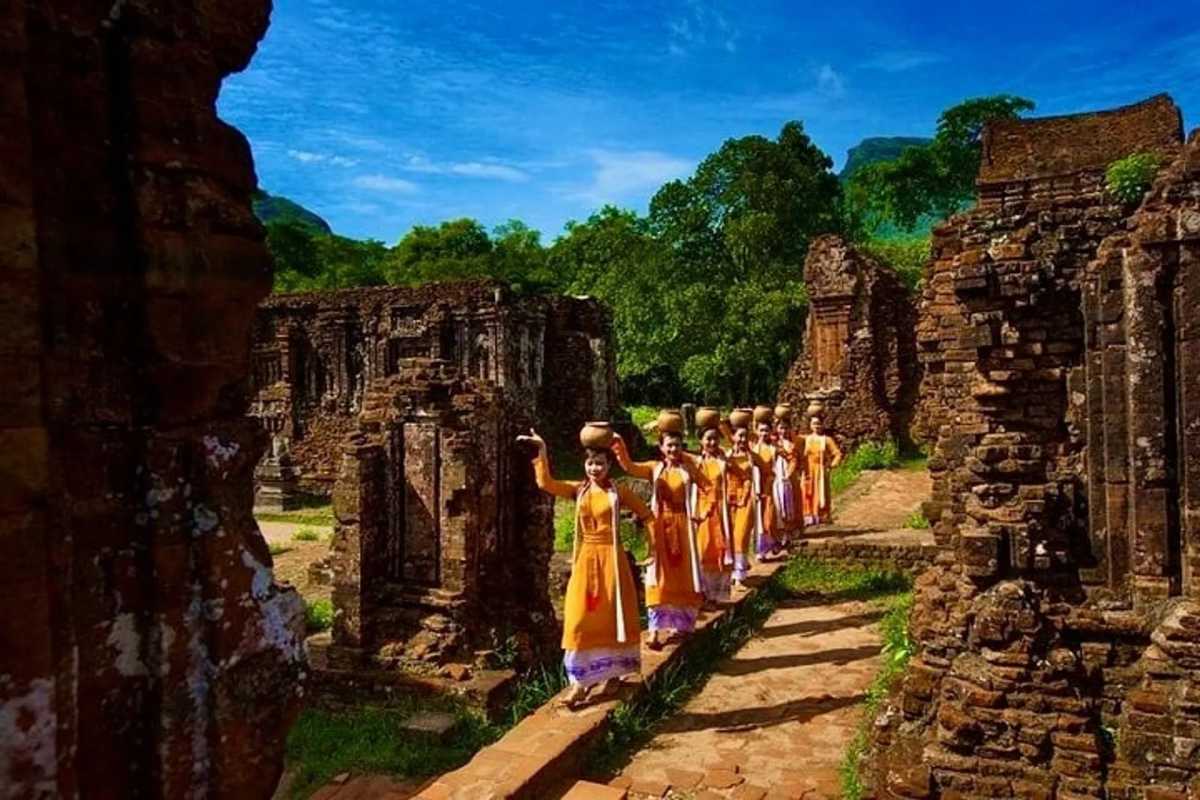
Potential Drawbacks & How to Mitigate Them
Visiting My Son Sanctuary comes with certain challenges that can affect your experience if unprepared. The tropical climate often brings intense heat and humidity, especially during midday, which can be exhausting. Additionally, popular times see larger crowds and tour groups, which might detract from the site's peaceful atmosphere.
Being aware of these factors allows you to plan effectively, ensuring comfort and maximizing your enjoyment of the sanctuary’s cultural and historical treasures. By understanding visitor challenges and crowd management techniques, you can create a more personalized and rewarding visit to My Son Sanctuary.
Prepare well and manage your time wisely to make the most of your journey to My Son Sanctuary.
Navigating the Heat & Humidity
Traveling to My Son Sanctuary during the warmer parts of the day requires smart preparation to stay comfortable and healthy. Consider these tips:
- Hydration: Carry plenty of water to prevent dehydration in the humid climate.
- Sun Protection: Wear a wide-brimmed hat, sunglasses, and apply sunscreen regularly.
- Clothing: Choose lightweight, breathable fabrics that wick away sweat.
- Timing: Visit early morning or late afternoon to avoid peak heat hours.
- Shade: Take breaks under trees or shaded spots to cool down.
Following these simple steps can make your visit much more enjoyable despite the tropical climate.
Stay cool and refreshed to fully appreciate My Son Sanctuary.
Anya's Take on the Midday Heat
Oh, the midday heat at My Son Sanctuary! Even thinking about it now, I can feel a bead of sweat tracing a path down my spine. When I planned my trip to Central Vietnam, I envisioned misty mornings and gentle breezes as I explored ancient ruins. What I got instead was a brutal lesson in tropical sun, particularly on my My Son day.
We arrived around 10:30 AM, thinking we were being smart by missing the absolute earliest rush, but wow, were we wrong about the temperature. Stepping out of our air-conditioned car was like walking into a preheated oven. The air wasn't just warm; it was heavy, a thick, humid blanket that clung to you instantly. My light cotton t-shirt, which had felt so breezy moments before, immediately began to stick. The ground itself, the dusty, reddish earth of the sanctuary, radiated heat, almost as if it had been baking for hours longer than the sun had actually been up.
I remember this intense, shimmering haze rising from the ancient brick towers. It made them look almost ethereal, like they were wavering in a mirage. Honestly, it was beautiful in a surreal way, but mostly, it was just hot. The sun beat down with an unwavering intensity, forcing me to squint even with my sunglasses on. Every few steps, I’d find myself instinctively reaching for the rim of my wide-brimmed hat, pulling it lower, desperately trying to create just a millimeter more of shade for my face.
We quickly adopted a "shade-hopping" strategy. We’d walk briskly from one cluster of ruins to the next, then immediately seek refuge under the sparse trees or behind the thicker walls of the more intact structures. Those moments of respite, even just for 30 seconds, felt like finding an oasis. I practically inhaled my water, and when I thought I was hydrated enough, I’d drink more. My small, portable fan became my best friend, its weak breeze feeling like a lifesaver against my flushed skin.
What struck me most was the sheer determination required to absorb the history. Usually, I'm one to linger, read every plaque, and just feel the atmosphere. Here, it was a race against discomfort. I found myself admiring the intricate carvings in hurried bursts, my mind constantly pulling between the awe of the ancient art and the pressing need to escape the direct sun.
My big takeaway from that experience? Go early, Anya. Seriously, go early. If you want to truly appreciate My Son without feeling like you're melting into the earth, aim to be at the gates right when they open, around 6:00 or 6:30 AM. That brief window of cooler temperatures and softer light is priceless, not just for comfort but for photography too. By 9:00 AM, the heat really starts to kick in, and by 11:00 AM, it's a full-on furnace. Otherwise, pack a small towel to wipe sweat, embrace the electric shuttle bus (it's a lifesaver!), and remember that even intense heat can add a unique, if challenging, layer to your travel story. It certainly made me appreciate my next iced coffee in Hoi An like never before!
Managing Crowds & Tour Groups
Crowds can sometimes overwhelm the tranquil atmosphere of My Son Sanctuary. To avoid this:
- Visit early in the morning or later in the afternoon when tours are fewer.
- Explore lesser-known temple clusters to escape the busiest areas.
- Choose a weekday visit rather than weekends or holidays.
- Book private or small group tours for a more personalized experience.
Employing these strategies helps maintain the sense of discovery and peacefulness at the site.
Avoid peak crowds to enjoy a serene visit to My Son Sanctuary.
Robert's Early Morning Serenity
The gentle hum of our early morning taxi was the only sound breaking the pre-dawn stillness as we left Hoi An. It was still dark, a deep indigo fading slowly into a bruised purple, and a palpable coolness hung in the air – a welcome contrast to the midday heat I'd experienced elsewhere in Vietnam. I had heard the whispers, the traveler's gospel about My Son Sanctuary: go early, go for the serenity. And as the first faint hint of orange brushed the horizon, I felt a tremor of anticipation, a quiet excitement for what awaited.
Arriving at My Son just as the gates opened, around 6 AM, felt like stepping into a private, ancient world. There were only a handful of other vehicles, and the air was crisp, carrying the earthy scent of the surrounding jungle. No bustling crowds, no shouts of tour guides over the din – just the distant chirping of unseen birds and the soft rustle of leaves as a gentle breeze stirred.
We took the buggy from the entrance, a quick, breezy ride through lush vegetation, and then emerged into the main sanctuary grounds. And there it was: a collection of ancient brick temples, some remarkably preserved, others crumbling gently into the earth, all bathed in the most exquisite, soft golden light. The sun, just peeking over the distant hills, cast long, dramatic shadows that stretched like fingers across the grassy clearings, highlighting the intricate carvings and revealing textures that would be lost in the harsher midday glare.
I wandered from one temple cluster to another, my footsteps muffled by the dewy grass. It was incredibly peaceful. I could hear my own breath, the whisper of the wind through the tall trees, and the occasional rustle of a lizard in the undergrowth. I lingered at Group B, the most intact and impressive cluster, tracing the delicate patterns of the bas-reliefs with my eyes. Without the press of crowds, I could truly see the craftsmanship, imagine the rituals performed there centuries ago. The cool bricks felt smooth under my fingertips when I cautiously touched them, a direct connection to the past.
The sense of discovery was profound. It felt like an archaeological expedition of one, a personal communion with history. I found myself in quiet contemplation, sitting on a low stone wall, just watching the light change, listening to the symphony of the awakening jungle. There was a faint scent of damp moss and ancient stone, mingling with a sweet, unknown floral note. It was a moment of pure, unadulterated tranquility, something so rare in popular tourist sites. I even managed to capture some incredible photographs, the kind where the light is just right and there isn't a single person photobombing your shot – a true photographer's dream.
If you're considering visiting My Son Sanctuary, please, please make the effort to go early. Yes, it means an alarm clock shattering the darkness before dawn, but the reward is immeasurable. You'll avoid the oppressive midday heat that can make exploration a chore, and more importantly, you'll dodge the massive tour groups that arrive later in the morning. This early window, typically from 6:00 AM to 8:30 AM, offers a serenity that transforms the experience from a mere sightseeing stop into a truly immersive, reflective journey. You'll gain an intimate appreciation for the ruins, a peaceful connection to the Cham heritage, and a sense of calm that will stay with you long after you've left. It's the only way to truly experience the magic of My Son.
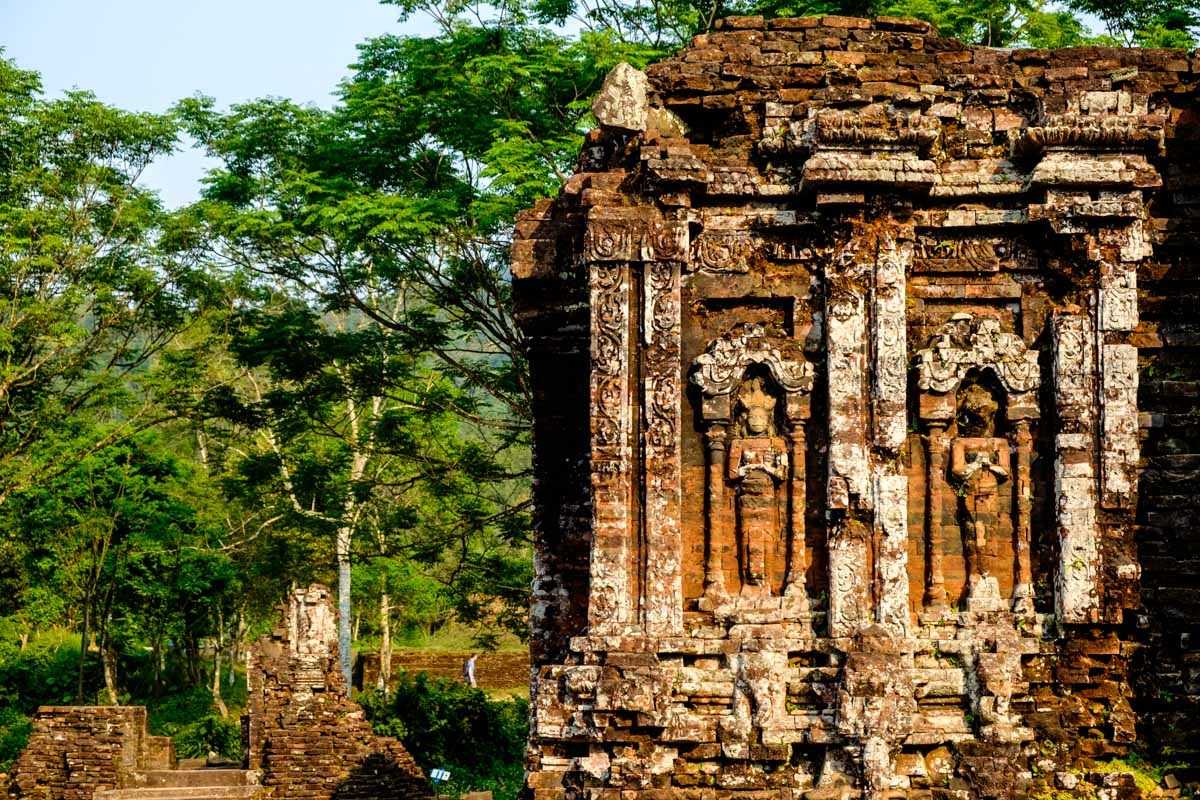
Historical Background of My Son Sanctuary
The My Son Sanctuary History traces back to the 4th century when the Champa Kingdom established this site as a religious center dedicated primarily to Shiva worship. Serving as a spiritual and political hub, My Son Sanctuary showcases architectural and cultural achievements spanning over a millennium. Understanding this history reveals the sanctuary’s role in Southeast Asian archaeology and its enduring cultural heritage, despite the challenges posed by war and natural decay.
Explore the rich My Son Sanctuary History to deepen your appreciation of this remarkable cultural landmark.
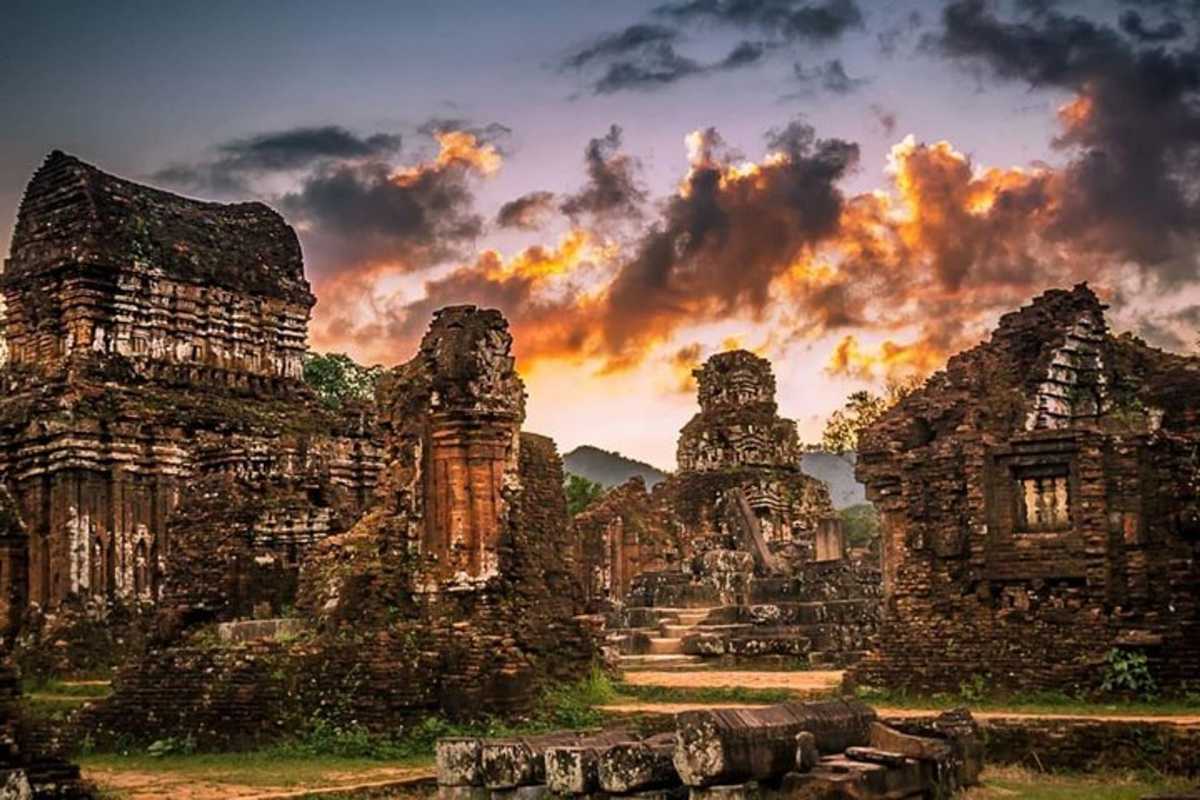
Origins and Construction Period
The origins of My Son Sanctuary date to the early Champa Kingdom, where successive kings commissioned temples to honor Hindu deities, especially Shiva. Construction began in the 4th century and continued through the 14th century, reflecting evolving Cham architectural styles and religious practices. This sanctuary served as a major religious center, symbolizing royal patronage and spiritual devotion.
The complex's temples illustrate sophisticated temple-building techniques that highlight the cultural and spiritual values of the time.
Plan your visit with an understanding of the sanctuary’s origins and construction to fully appreciate its depth.
Timeline from 4th to 14th Century
This timeline breaks down the major historical phases of My Son Sanctuary, highlighting key rulers and architectural developments that shaped the site over ten centuries.
- Early 4th Century: Initial construction marks the foundation of the sanctuary as the spiritual center of the Champa Kingdom.
- 7th to 9th Century: Significant expansion under influential Cham rulers brings refined architectural styles and temple complexes.
- 10th to 13th Century: The sanctuary reaches its peak with elaborately decorated temples and rich cultural expression.
- 14th Century: The site begins to decline due to political instability and external invasions.
This clear timeline helps visualize how My Son Sanctuary evolved as a major religious and cultural landmark.
Plan your visit to My Son Sanctuary with this historical context to fully appreciate the depth of its heritage.

Role in the Champa Kingdom
My Son Sanctuary held profound religious, political, and cultural importance within the Champa Kingdom. It was more than just a temple complex; it symbolized the divine authority of Cham kings and served as the spiritual heart of their civilization. The sanctuary was a place where royal ceremonies and spiritual rituals intertwined, reflecting the close connection between governance and religion.
Understanding this multifunctional role allows visitors to appreciate My Son Sanctuary not only as an archaeological site but also as a symbol of power and faith that shaped Cham society.
Explore the religious and political importance of My Son Sanctuary to deepen your connection with its history and cultural legacy.
Religious and Political Importance
The sanctuary’s spiritual significance centered on the worship of Shiva and other Hindu deities, making it a vital religious center for the Cham people. The temples were designed to honor these gods and facilitate sacred rituals that reinforced the divine right of kings.
- Worship of Shiva: Central deity in My Son Sanctuary, reflecting the Cham’s Hindu beliefs.
- Royal burial site: The sanctuary also served as a resting place for Cham kings, highlighting its political and spiritual stature.
- Cham kings’ patronage: Kings commissioned temple constructions to legitimize their rule and demonstrate piety.
- Spiritual rituals: Ceremonies performed here linked the king’s authority to divine forces.
These elements illustrate how My Son Sanctuary was a potent symbol of Cham power and governance.
Recognizing the religious and political significance of My Son Sanctuary enriches your understanding of its enduring legacy.
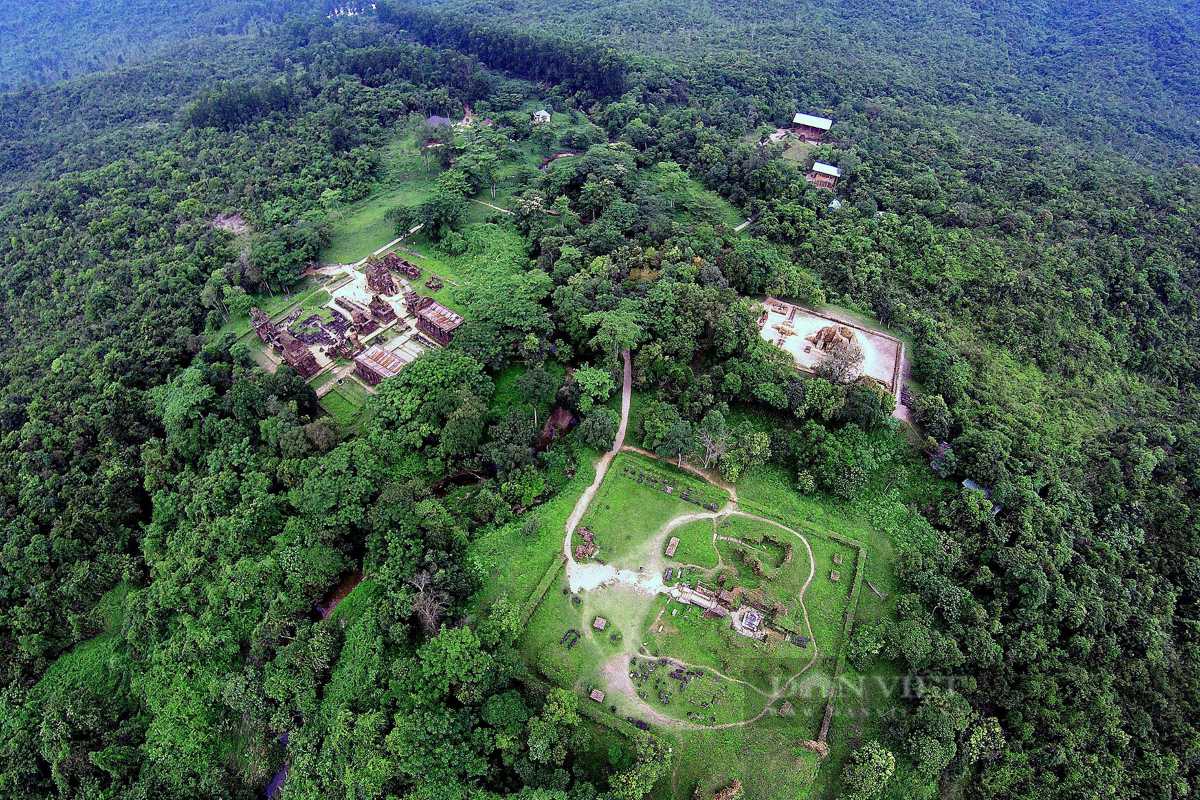
Impact of Wars and Natural Decay
My Son Sanctuary has endured significant challenges from both human conflict and natural forces. During the Vietnam War, extensive bombing severely damaged many of the temple structures, threatening the site's integrity. Despite this devastation, the sanctuary’s ruins still stand as a powerful testament to resilience. Beyond warfare, ongoing weathering and erosion caused by monsoons, vegetation growth, and natural decay continue to challenge preservation efforts.
Understanding these impacts helps visitors appreciate the sanctuary’s fragile beauty and the importance of ongoing restoration and conservation.
Recognize the resilience of My Son Sanctuary as you explore its historical and natural endurance.
Damage during the Vietnam War
The sanctuary suffered heavy bombing during the Vietnam War, which left many temples partially destroyed or heavily scarred. The intense bombardment targeted the surrounding areas, resulting in significant structural damage to the red brick towers. Survivor accounts and historical records attest to the devastating effects this conflict had on My Son Sanctuary, making preservation efforts more urgent.
Despite this destruction, restoration teams have worked tirelessly to stabilize and protect the remaining ruins.
Reflect on the wartime history to fully grasp the challenges overcome by My Son Sanctuary.
Effects of Weathering and Erosion
Natural forces continuously impact My Son Sanctuary, requiring ongoing conservation work. Key factors include:
- Monsoon impact: Heavy rains and seasonal storms accelerate stone erosion and brick deterioration.
- Vegetation growth damage: Roots and plants infiltrate structures, causing cracks and destabilization.
- Preservation challenges: Balancing public access with protection against natural decay.
- Temperature fluctuations: Cause material expansion and contraction, weakening structures over time.
These natural decay processes emphasize the need for responsible tourism and active preservation initiatives.
Support sustainable visits to My Son Sanctuary to help protect its fragile heritage.
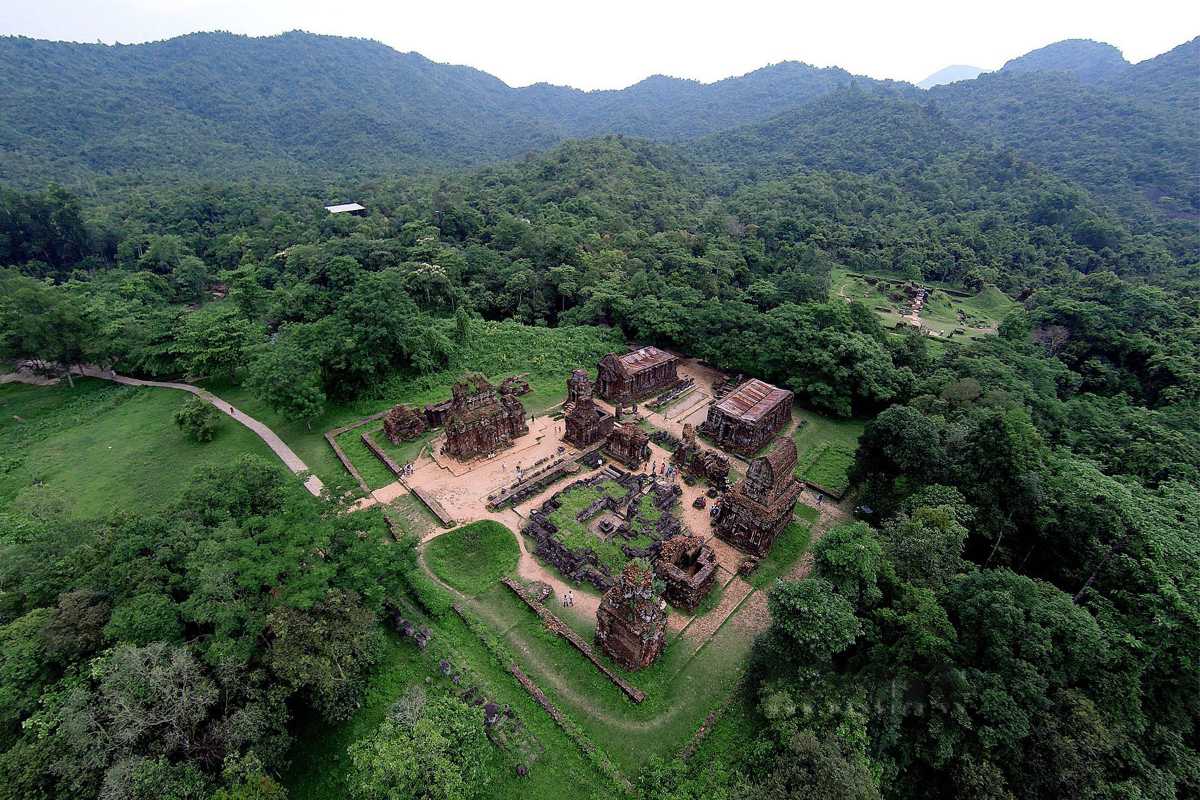
Cultural Heritage and Cham Civilization
The Cham Civilization remains a vital part of Vietnam’s cultural mosaic, with My Son Sanctuary serving as a lasting symbol of their rich heritage. This sanctuary is not only an archaeological site but also a testament to the enduring traditions, religious art, and cultural festivals that connect the ancient past with contemporary Cham life. Understanding the Cham Civilization enriches the experience of visiting the ruins and reveals the deeper cultural context behind the temple complex.
Discover how the Cham people preserve their identity and how My Son Sanctuary plays a crucial role in cultural heritage preservation.
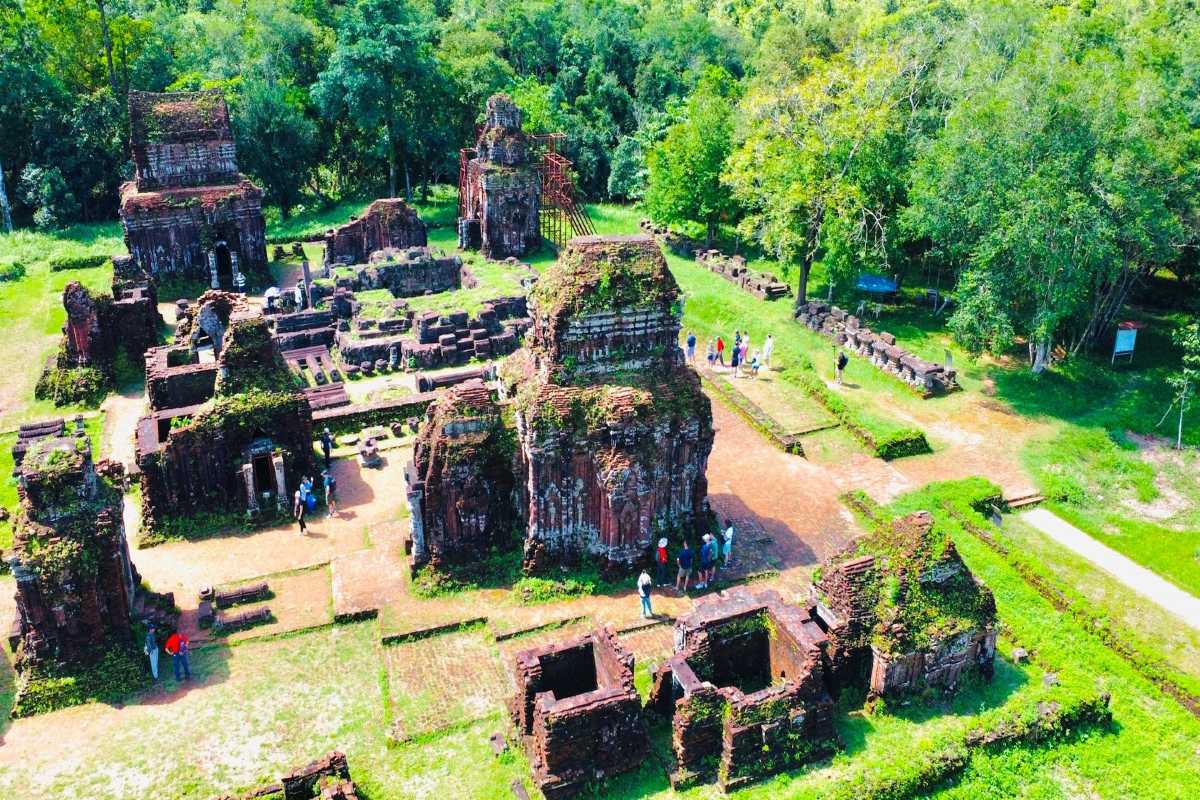
Cham People and Their Traditions
The Cham people are an ethnic minority in Vietnam with a living culture that has survived centuries of change. Today, many continue to practice traditional crafts, speak their native language, and celebrate festivals that honor their ancestors and history. Despite modernization, their cultural identity remains strong, linking them intimately to the heritage embodied by My Son Sanctuary.
Learning about the Cham people’s cultural traditions provides valuable insight into the community that built and continues to cherish this sacred site.
Explore the vibrant traditions of the Cham people to deepen your connection with My Son Sanctuary.
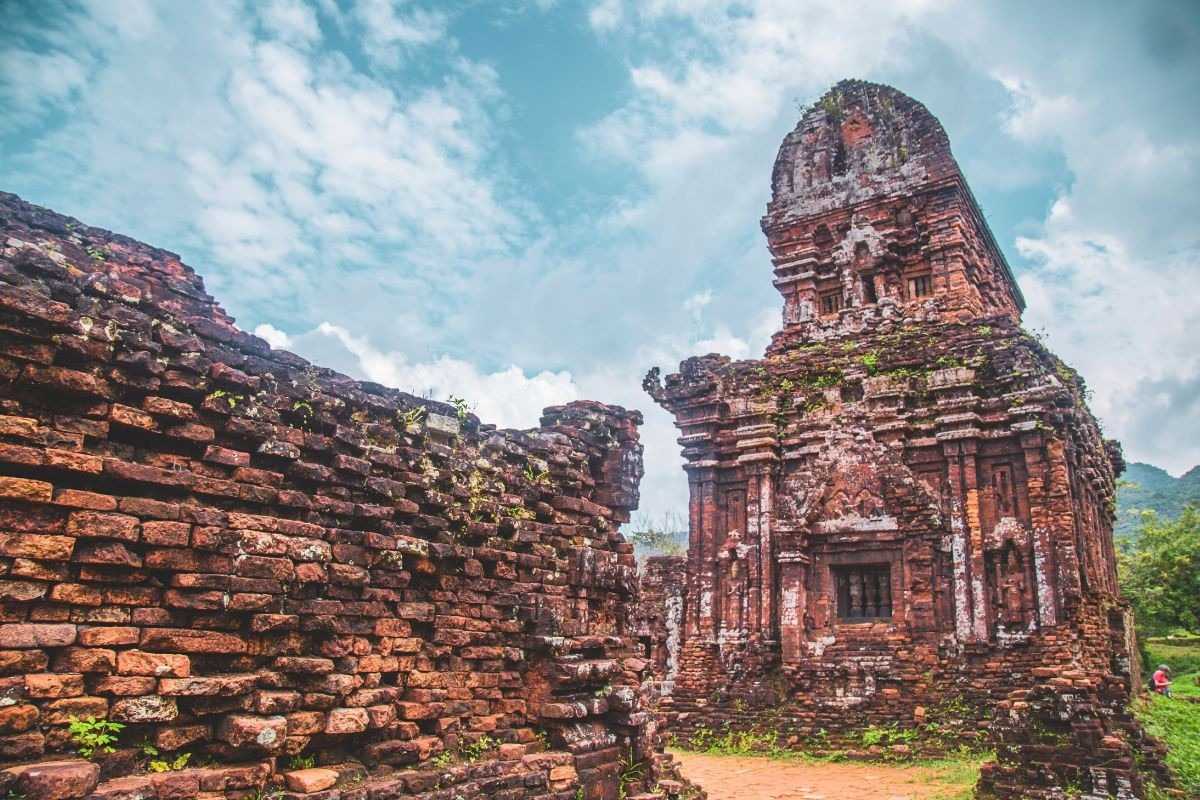
Hindu Influences in Architecture and Art
The artistic legacy of My Son Sanctuary reflects profound Hindu influences, evident in its temple carvings and sculptures. The site’s decorations depict mythological scenes and sacred figures that reveal the spiritual beliefs of the Cham Civilization and their ties to Indian art. These religious motifs enrich the visual storytelling present throughout the sanctuary.
Understanding the Hindu deities in Cham art helps visitors interpret the symbolic language carved into the temple walls.
Delve into the artistic and religious inspiration behind My Son Sanctuary’s unique temple art.
Symbolism in Bas-reliefs and Sculptures
The carvings at My Son Sanctuary feature rich symbolism through common motifs:
- Apsaras meaning: Celestial dancers representing divine beauty and grace.
- Gajasimha symbolism: Mythical creatures symbolizing protection and strength.
- Kala significance: Guardian figures warding off evil and ensuring sanctity.
These religious motifs illustrate the deep spiritual messages embedded in the Cham Civilization’s iconography.
Appreciate the sacred symbolism woven into the sculptures to gain deeper cultural insight at My Son Sanctuary.
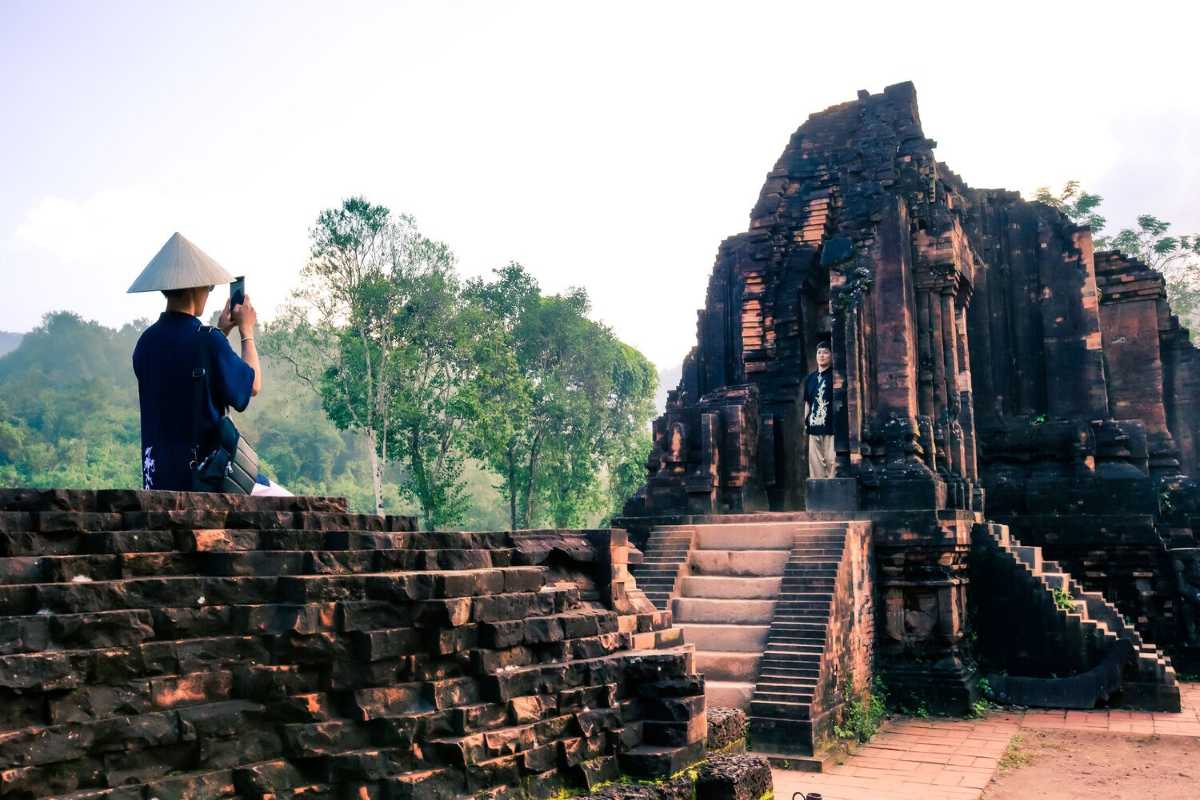
Preservation of Cham Culture Through My Son
The role of My Son Sanctuary extends beyond its ancient ruins; it is a vibrant center for Cham culture preservation and identity. The site actively supports the continuation of traditional practices, community involvement, and cultural performances that keep Cham heritage alive. Through festivals and heritage conservation programs, My Son Sanctuary fosters a living connection between past and present.
Understanding these efforts reveals how the sanctuary functions as a dynamic cultural heritage site rather than a static historical monument.
Explore how My Son Sanctuary sustains and celebrates the Cham cultural heritage to enrich your visit.
Contemporary Cultural Events and Festivals
Several cultural events and festivals take place at or near My Son Sanctuary, offering visitors a chance to experience authentic Cham traditions firsthand. Highlights include traditional Cham dance performances, musical ceremonies, and the annual My Son festival, which celebrates the site’s history and spiritual significance. These events not only entertain but also educate, fostering cultural tourism that supports heritage preservation.
Attending these cultural festivals provides a deeper appreciation of the Cham community and their ongoing efforts to keep their traditions vibrant.
Plan your visit around these events to engage fully with the living culture at My Son Sanctuary.
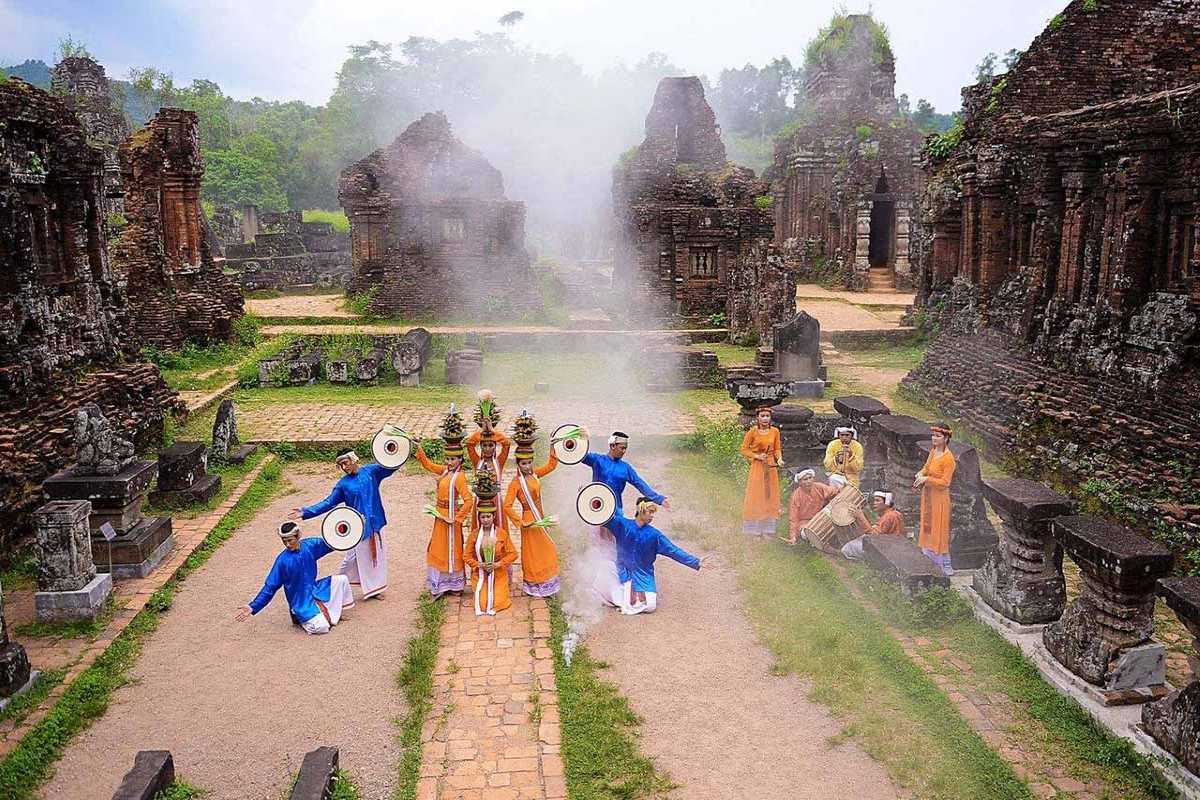
Getting the Most Out of Your My Son Sanctuary Visit
Visiting My Son Sanctuary can be a profoundly rewarding experience when planned thoughtfully. Choosing the right tour, knowing the best photography spots, and engaging with the local Cham culture enhance your visit beyond simply seeing the ruins. This section offers practical advice and insider tips to help you make informed decisions and create lasting memories at My Son Sanctuary.
Plan your trip carefully to maximize your visitor experience at My Son Sanctuary and connect deeply with its cultural richness.
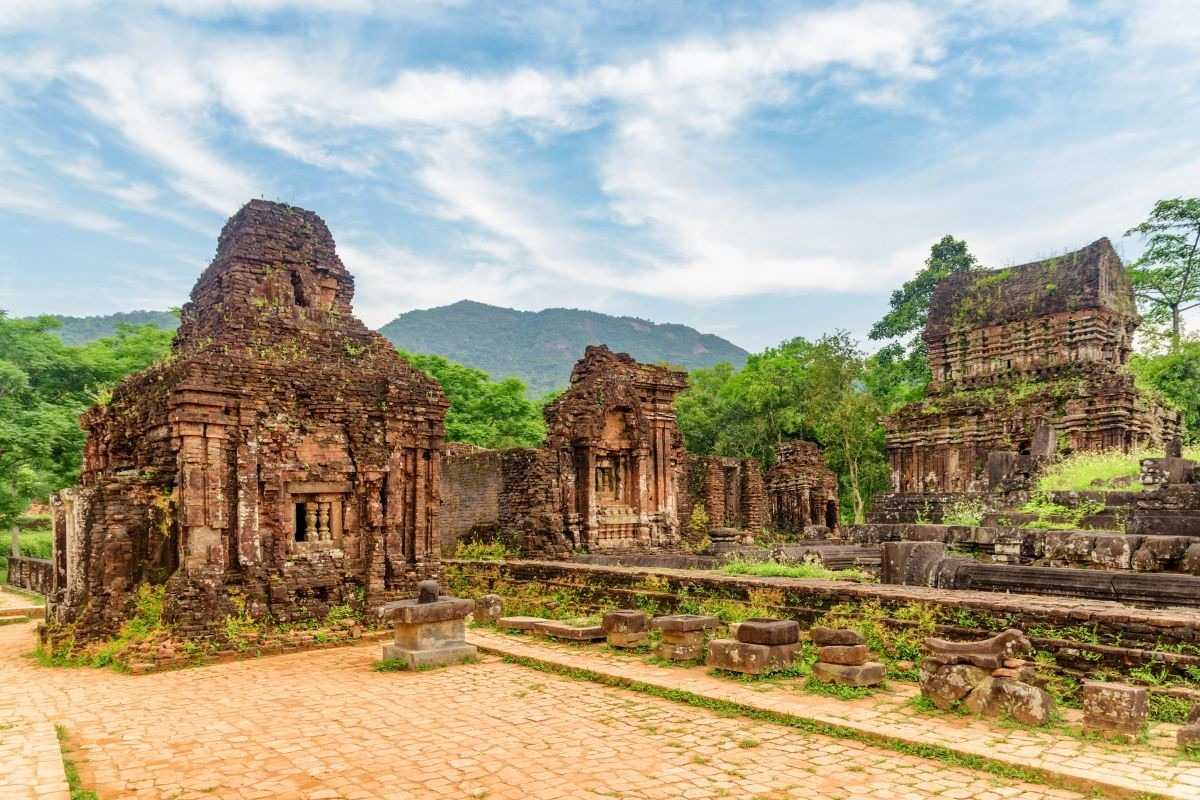
Choosing Your Tour: Group vs. Private vs. Self-Guided
When planning your visit to My Son Sanctuary, selecting the right type of tour is essential for a fulfilling experience. Group tours offer the convenience of a knowledgeable guide and structured itinerary but may lack flexibility. Private tours provide personalized attention and adaptability, ideal for travelers seeking a tailored journey. Self-guided tours allow freedom to explore at your own pace, though they require prior research to fully appreciate the site’s history.
Understanding the pros and cons of each tour option helps you match your budget, interests, and travel style to the best fit.
Choose the tour style that aligns with your preferences to get the most out of your My Son Sanctuary visit.
Emily's Group Tour Insights
Deciding how to visit My Son Sanctuary can feel like a bit of a puzzle, especially with all the options out there. For my trip, I opted for a group tour, and while it had its unique charms, I definitely walked away with some insights I wish I'd known beforehand.
The biggest pro, right off the bat, was the sheer convenience. We were picked up directly from our hotel in Hoi An, which meant no haggling with taxis at dawn or trying to navigate unfamiliar roads on a scooter. The air-conditioned van was a welcome relief from the building humidity even in the early morning. It just took all the logistical stress out of the equation, leaving me free to sip my coffee and anticipate the ancient wonders ahead.
Our guide, a lovely woman named Linh, was truly the highlight. She was incredibly knowledgeable, not just about the historical facts and figures of the Cham Kingdom, but also about the fascinating stories and legends behind the ruins. She pointed out intricate carvings I would have completely missed on my own and explained the significance of different temple groupings. Without her, I honestly think My Son would have been a collection of beautiful but silent bricks. Her passion for her heritage was infectious, and her detailed explanations brought the crumbling stones to life. It was a proper education, making the experience so much richer.
However, the group tour also meant a fixed schedule and pace. We moved from one cluster of temples to the next at a set speed, and while Linh was great at answering questions, there wasn't a lot of time for lingering in one spot if something particularly captivated you. I'm a bit of a slow traveler and photographer, so I often felt a slight nudge to keep up with the group. There were moments when I wished I could just sit in silence for five minutes longer, absorbing the atmosphere, or spend more time trying to get that perfect shot of a specific carving. It was also a bit crowded at times, especially when two or three different tour groups converged on the same popular ruin. You sometimes had to jostle a bit for a good viewing spot, which could detract from the "ancient, mystical site" vibe.
Another thing to note is that some group tours might include additional stops that aren't strictly My Son-focused, like a quick visit to a local craft village on the way back, or a boat trip down the Thu Bon River. While these can be charming, if your sole focus is My Son, it means less time at the actual sanctuary itself. Our tour included a lovely, relaxing boat ride back to Hoi An, which was a pleasant way to cool down after the heat of the ruins, but it did eat into what could have been extra exploration time.
My advice if you choose a group tour (which I still recommend for the insights!): manage your expectations regarding personal flexibility. Embrace the knowledge your guide offers – they are truly invaluable. Listen to their recommendations for the best photo spots or areas to spend more time if the group size allows. Consider a "small group" tour if available, as fewer people generally mean a slightly more personalized experience. And most importantly, do a little bit of your own research beforehand. Knowing a few key facts or areas of interest will help you make the most of the guide's expertise and ensure you don't miss anything crucial even within the group's pace. It's a fantastic way to experience My Son, as long as you go in with your eyes open to the dynamic of a shared journey.
Liam's Self-Guided Adventure
“Do you really think you can find it on your own?" my hotel receptionist asked, a slight note of concern in her voice as I explained my plan for My Son Sanctuary. I just grinned. "That's part of the adventure!" I declared, perhaps a little too confidently. My decision to go self-guided to My Son was driven by a craving for absolute freedom – the kind where you can linger for as long as you want at a crumbling tower, or wander off the main path (within designated areas, of course) to see what secrets the jungle might hold.
My journey began with a rented motorbike from Hoi An, a trusty little Honda Wave. The ride itself was an unexpected joy. Leaving Hoi An before dawn, the air was cool and fresh, carrying the scent of damp earth and rice paddies. The road was mostly clear, and watching the sun slowly paint the sky in hues of orange and pink as I zipped through small villages was a spectacular start to the day. The freedom of the open road, wind in my face, was exhilarating. I even pulled over once to just soak in the quiet beauty of the countryside as farmers began their day in the fields.
Arriving at My Son, the first feeling was one of triumphant independence. I paid my entrance fee, picked up a basic map, and was on my own. This immediately allowed me to set my own pace. I bypassed the initial throngs heading for the shuttle bus and decided to walk the path, taking in the transition from modern entrance to ancient ruins. I spent a long time at the visitor center, reading every information board, trying to absorb as much context as possible before entering the actual site. This was crucial because, without a guide, you are responsible for piecing together the story.
The biggest challenge, and also the most rewarding aspect, was the lack of a personal guide's narrative. There are informative plaques at each temple cluster, yes, but they offer facts, not stories or interpretations. There were moments when I wished I had someone to explain the deeper symbolism of a particular carving or the historical context of a specific ruin's destruction. I found myself relying heavily on the pre-trip research I'd done – the more you know before you go, the richer your self-guided experience will be. Having a good offline map of the sanctuary on my phone was also a godsend, helping me navigate between the clusters without wasting time or getting turned around.
But the payoff was immense. I could spend 45 minutes at one particularly serene temple, just sitting on a stone bench, sketching in my notebook, listening to the jungle come alive. I found a secluded pathway that led to a less-visited section, where the ruins were more overgrown, and the silence was profound. It felt like I was discovering these places for the first time, a true explorer. The feeling of making my own discoveries, of truly letting the site speak to me without interruption, was exactly what I craved. I found beauty in the quiet corners, the way sunlight filtered through ancient doorways, and the rustle of leaves that seemed to whisper forgotten tales.
My key piece of advice for anyone considering a self-guided My Son adventure is this: do your homework! This isn't a place to arrive completely blind. Read up on Cham history, the significance of the various temple groups (A, B, C, D, etc.), and the common architectural styles. Knowing a bit about what you're looking at will transform your visit from just seeing old bricks to truly understanding a profound civilization. Second, go early – not just for the cool air, but for the precious solitude. That window before 8 AM is magical. And finally, embrace the quiet. Without a guide's voice, you'll be more attuned to the sounds of the jungle, the feeling of the ancient stones, and your own thoughts. It's an adventure in self-discovery as much as it is an exploration of history, and it's an experience I wouldn't trade for anything.
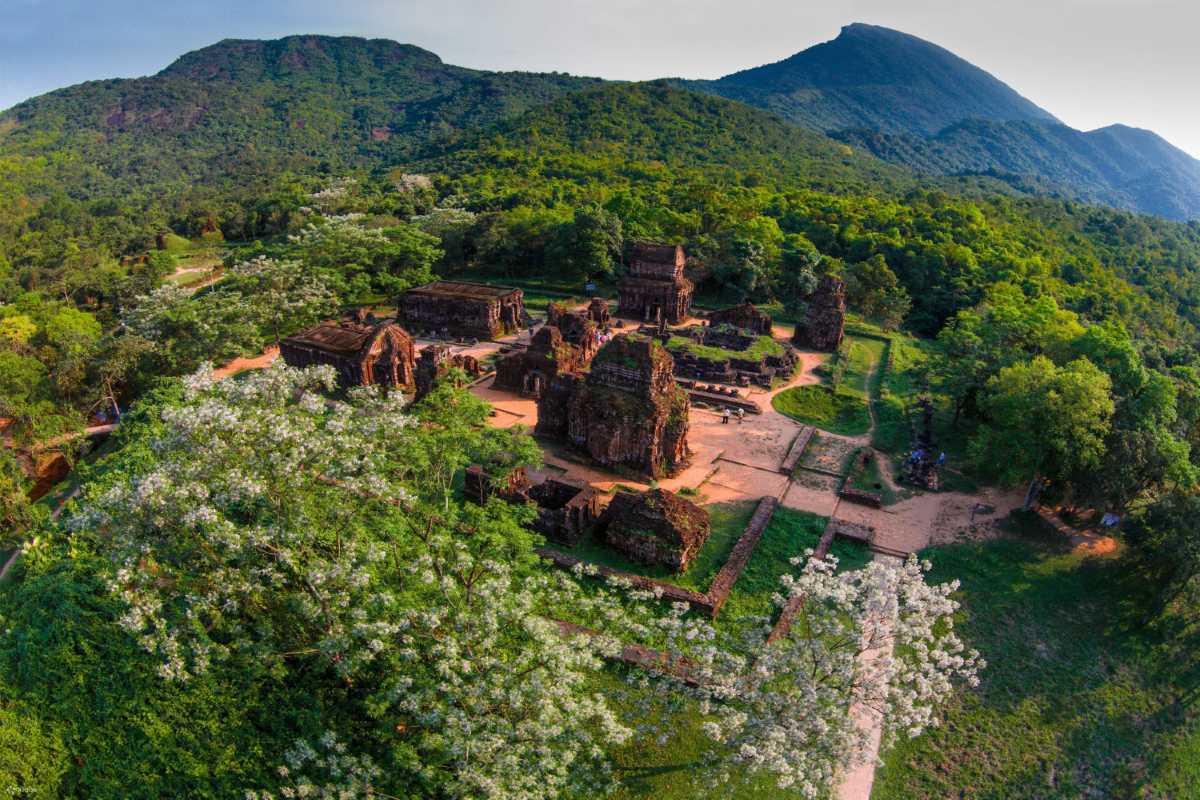
Best Photography Spots & Tips
Finding the best photography spots My Son Sanctuary offers is key to capturing its timeless beauty while honoring the sacred atmosphere. Early morning light, especially during the golden hour, transforms the ruins with warm tones and soft shadows, creating breathtaking images. Knowing where to position yourself and how to use natural light enhances your photos and respects the site's cultural sensitivity.
Use these expert tips to improve your My Son Sanctuary sunrise photography and preserve the integrity of this historical site.
- Visit during the golden hour (shortly after sunrise or before sunset) for the most flattering natural light.
- Focus on iconic structures like the Kalan, mandapa, and entrance gates to capture architectural details.
- Use wide-angle lenses to emphasize the scale of the temple clusters and the surrounding jungle.
- Respect the site by avoiding flash photography and keeping a safe distance from fragile carvings.
- Experiment with different angles to incorporate nature, such as framing ruins against the lush greenery.
These photography tips help you create lasting memories while honoring My Son Sanctuary’s cultural significance.
Capture stunning images at My Son Sanctuary with these mindful photography strategies.
Sarah's Sunrise Shots
For me, travel and photography go hand-in-hand. I'm always chasing that perfect light, that magical moment where a place truly reveals its soul through the lens. And at My Son Sanctuary, that moment unequivocally arrives with the sunrise. I’d read all the advice, seen the online galleries, and knew that if I wanted truly special shots, I had to be there when the world was just waking up.
My alarm blared at an ungodly 4:30 AM – not my usual vacation wake-up call, but a necessary evil for the promise of golden hour glory. We arranged a private car from Hoi An, leaving while the streets were still mostly quiet and damp from the night. The drive itself was part of the anticipation, watching the pre-dawn sky slowly lighten, revealing the silhouettes of palm trees and rice paddies.
Arriving at the sanctuary gates just before 6 AM, there was a hushed atmosphere. Only a handful of other dedicated photographers and small tours were trickling in. The air was cool, carrying a clean, earthy scent. We walked quickly past the entrance area, took the electric buggy, and then plunged into the serene pathways leading to the ruins.
And then it happened. As we reached the first clusters of temples (Groups B and C, if you're keeping track!), the sun began to peek over the eastern jungle canopy. It wasn't a harsh, direct beam, but a soft, buttery, almost liquid light that diffused through the morning haze. The ancient brickwork, typically a faded reddish-brown in midday, suddenly glowed with warm, deep ochre and terracotta tones. The moss and lichen on the stones seemed to shimmer with an otherworldly green.
This light wasn't just beautiful; it was a photographer's dream. The low angle created long, dramatic shadows that sculpted the intricate bas-reliefs, bringing the Hindu deities and dancers to life with a three-dimensional quality you simply don't see later in the day. I was shooting with my mirrorless camera, mostly on a wide-angle lens (16-35mm), capturing the grandeur of the overall complex against the evolving sky. I also used my telephoto (70-200mm) to pick out the smaller, exquisite details on the upper levels of the towers, where the carvings caught the sun's first kiss.
My favorite spot was near the most intact structures in Group B, looking towards the east. As the sun climbed, its rays filtered through the gaps in the crumbling walls and doorways, creating stunning light shafts and starbursts that added a mystical element to the frames. I often dropped to a lower angle, almost kneeling, to emphasize the height of the temples against the vibrant sky. The absence of crowds was the ultimate bonus; I could set up my tripod, take my time composing shots, and truly immerse myself without feeling rushed or having to crop out dozens of other tourists. It was pure bliss.
If you're serious about photography or simply want to experience My Son in its most magical, contemplative state, the sunrise mission is non-negotiable. Aim to be at the gates at 6:00 AM sharp (or even a few minutes before). Bring a tripod if you have one – it's invaluable for those low-light, high-dynamic-range shots. A wide-angle lens is great for capturing the scale, but don't forget a telephoto for those intimate details. Most importantly, dress in layers, bring plenty of insect repellent (the early morning can be prime mosquito time), and allow yourself to simply be in the moment when that golden light hits. It’s an unforgettable experience that your camera – and your memories – will thank you for.
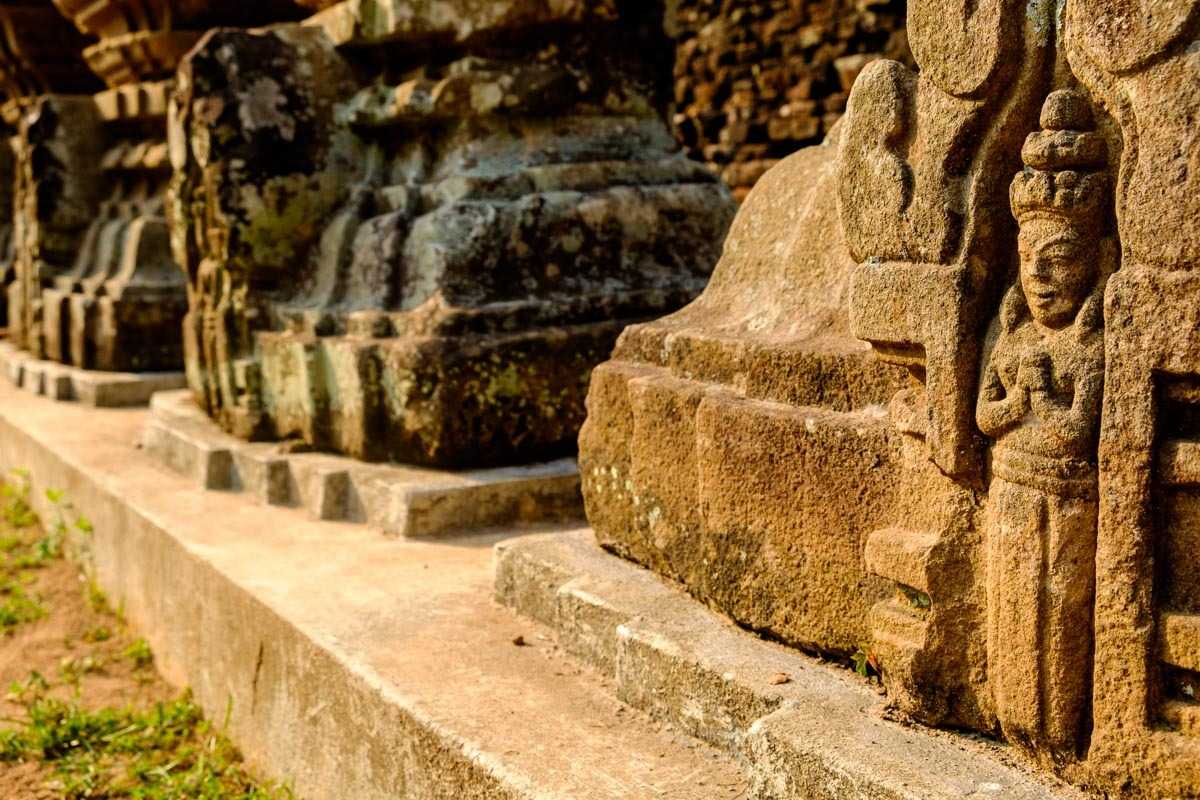
Engaging with Local Culture Beyond the Ruins
Beyond the majestic ruins of My Son Sanctuary, you have the chance to connect deeply with the living Cham culture through interactions with local artisans and community members. These encounters offer a window into traditional crafts, daily life, and cultural practices that have been preserved for generations. Engaging respectfully with local vendors and craftsmen enriches your visit and supports sustainable community tourism.
Embrace these authentic cultural exchanges to gain a fuller appreciation of the heritage surrounding My Son Sanctuary.
Spending time with Cham artisans allows you to observe traditional pottery, weaving, and other crafts firsthand. Many artisans welcome visitors, sharing stories about their techniques and the cultural significance behind their work. Supporting these local crafts fosters preservation and provides meaningful, memorable experiences.
Seek opportunities for cultural exchange with locals near My Son Sanctuary to deepen your travel experience.
David's Unexpected Encounter with a Cham Artisan
Before arriving at My Son Sanctuary, I was so focused on the ancient ruins themselves – the history, the architecture, the sheer scale of the Cham Kingdom’s spiritual heart. What I hadn't anticipated was a beautiful, unplanned detour into the living culture that still thrives around it.
I had opted for a self-guided visit, arriving early to beat the heat, and by late morning, as the sun began to climb relentlessly, I was making my way back towards the exit. Just beyond the main cluster of ruins, near the visitor centre but slightly off the beaten path where the shuttle bus drops you, I noticed a small, unassuming hut. Unlike the bustling souvenir shops, this one felt different. There was a quiet dignity to it, and a rhythmic tap-tap-tap sound emanating from within.
Curiosity piqued, I stepped closer and peered inside. There, bathed in the soft, diffused light filtering through the open doorway, sat an elderly Cham woman. She was meticulously carving what looked like a miniature version of the My Son temples out of a block of wood. Her hands, gnarled with age and experience, moved with an almost hypnotic precision, each tap of her small hammer against the chisel creating tiny, delicate chips that fell away to reveal the emerging form.
She looked up as I approached, her eyes, though ancient, held a warm, welcoming glint. "Xin chào," she greeted softly, offering a shy smile. I returned the greeting, and despite our limited shared language, a connection was immediately formed. I gestured towards her work, my eyes wide with admiration. She understood, and with a gentle nod, invited me closer.
She patiently demonstrated her technique, showing me how she shaped the wood, how she achieved the intricate details on the tiny roofs and pillars. The scent of fresh wood shavings filled the air, a clean, earthy aroma that was a stark contrast to the historical dust of the ruins. She pointed to a finished piece, a small, perfectly sculpted Shiva lingam, explaining its significance through gestures and the few English words she knew. It wasn't just a craft; it was a continuation of centuries of Cham artistic tradition, passed down through generations.
I spent a good twenty minutes there, completely captivated. We didn't exchange many words, but there was a profound sense of understanding. Her quiet dedication, the sheer skill in her hands, and the timelessness of her craft spoke volumes. It was a powerful reminder that My Son isn't just about what was, but about the living legacy that endures. I ended up purchasing one of her smaller carvings, a simple, elegant piece, not as a souvenir, but as a tangible memory of that unexpected human connection. Holding it, I still feel the warmth of her quiet smile and the unspoken story of her people.
This encounter reinforced a profound truth about travel: some of the most enriching experiences aren't found in guidebooks or on planned itineraries. They happen organically, in the spaces between the major sights, when you allow yourself to be open to genuine human connection. So, when you visit My Son Sanctuary, after you've soaked in the grandeur of the ancient temples, take a moment to look around the fringes of the site. Engage with the local people you might encounter, even if it's just with a smile. You might just stumble upon an experience, like my unexpected conversation with the Cham artisan, that adds a deeply personal and unforgettable layer to your journey, reminding you that culture isn't just history – it's alive, breathing, and waiting to be shared.
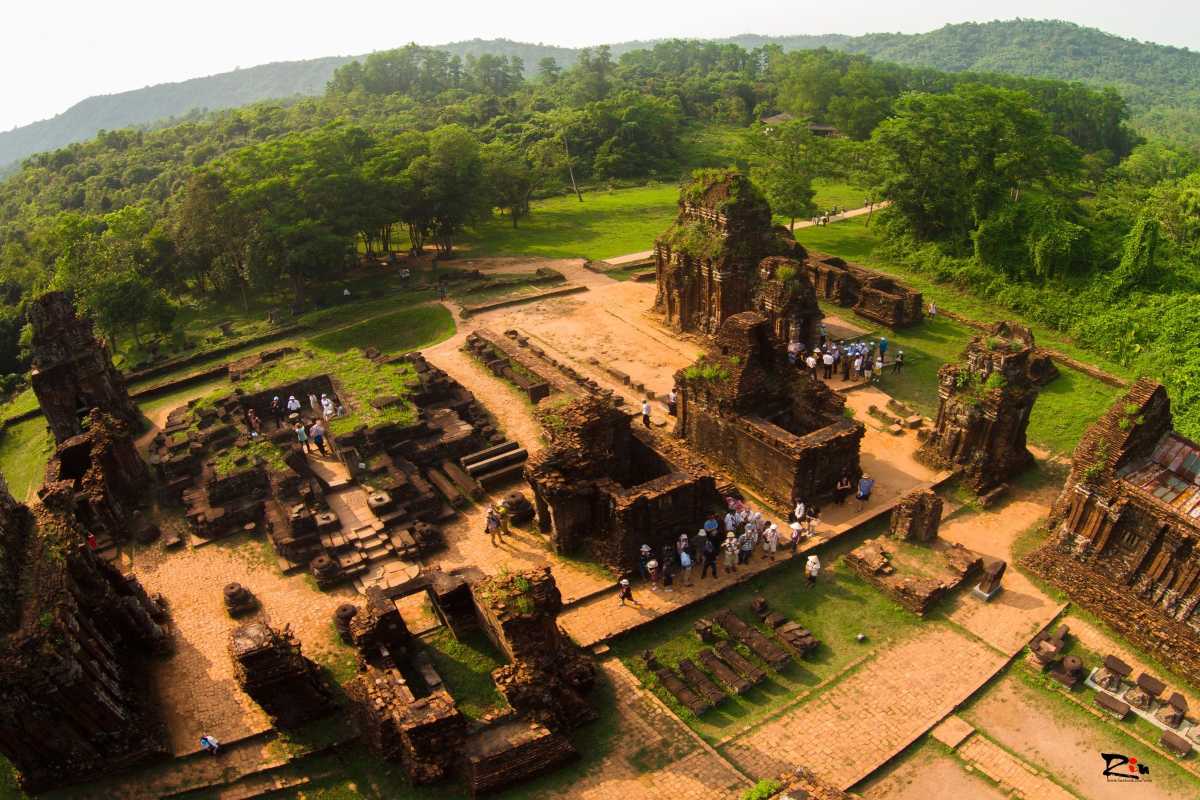
Visiting My Son Sanctuary: Practical Tips
Visiting My Son Sanctuary requires careful planning to ensure a smooth and enjoyable experience. This section provides essential guidance on how to reach the site, ticketing information, best visiting times, and available facilities. Clear, concise advice helps you prepare for your visit comfortably and confidently.
Prepare well to make your trip to My Son Sanctuary efficient and rewarding.
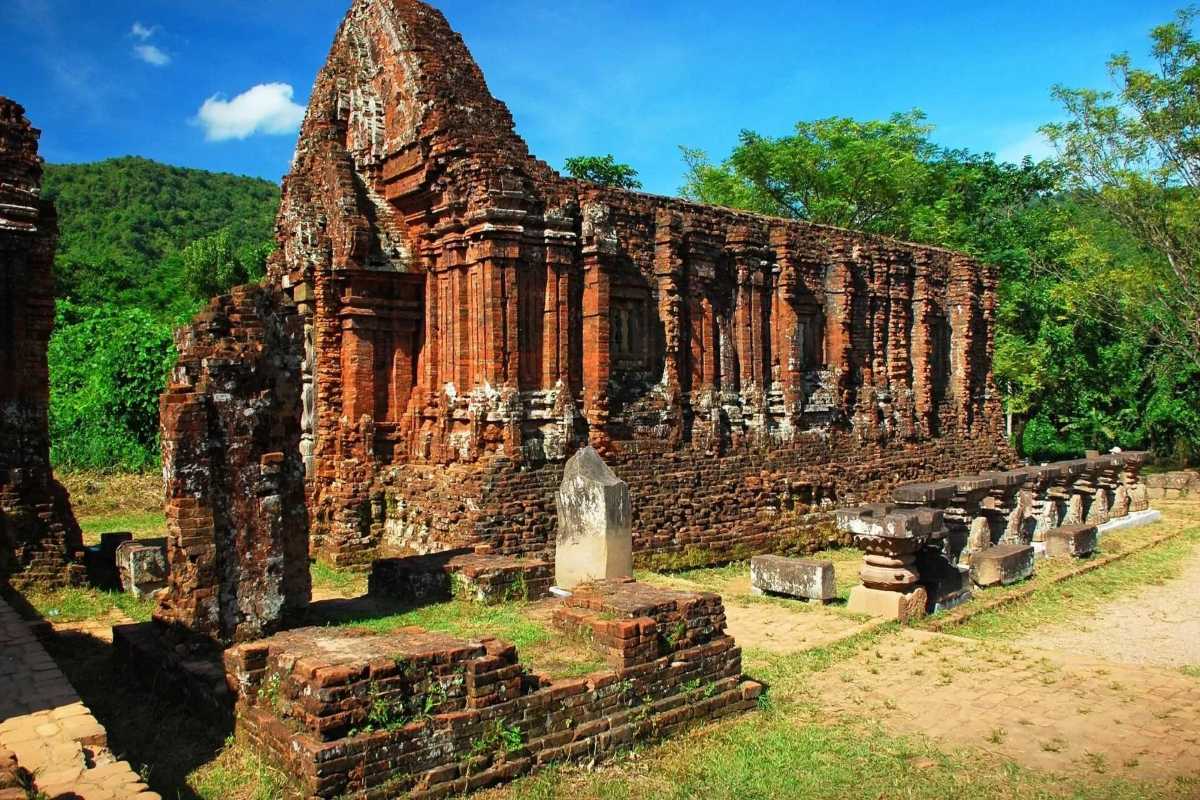
How to Get There
Travelers can reach My Son Sanctuary conveniently from nearby cities such as Hoi An and Da Nang using various transportation options. Understanding these choices, along with approximate costs and travel times, allows you to select the best mode for your itinerary and budget.
Knowing your transport options early helps you plan an effortless journey to My Son Sanctuary.
Transportation Options from Hoi An and Da Nang
Traveling to My Son Sanctuary from nearby cities involves several transportation modes, each suited to different budgets and preferences. Knowing your options and their details helps you choose the best way to reach the site comfortably and efficiently.
- Motorbike Rental: Flexible and scenic; about 45 minutes from Hoi An; costs approximately $5–$10 per day.
- Private Car or Taxi: Comfortable and direct; roughly 45 minutes from Hoi An and 1 hour from Da Nang; costs range between $20 and $40.
- Shared Shuttle Bus: Affordable option for groups; schedules vary from Hoi An; travel time around 1 hour.
- Bus Tours: Convenient packages combining transport and guided visits; prices depend on the tour provider.
Understanding these transportation choices ensures you can plan your visit to My Son Sanctuary according to your needs and schedule.
Choose the best transport option to start your My Son Sanctuary adventure smoothly.
Accessibility and Road Conditions
Visitors should be aware of the travel conditions and site accessibility when planning a trip to My Son Sanctuary. While the main roads are generally well-maintained, the sanctuary itself has uneven terrain and gravel paths, which can pose challenges for some travelers.
- Road Quality: Mostly paved roads leading to the sanctuary, with some gravel or dirt paths near the entrance.
- Terrain: Uneven surfaces inside the site; not fully accessible for wheelchairs or strollers.
- Motion Sickness: Motorbike rides on winding rural roads may cause discomfort for some.
- Mobility Considerations: Visitors with mobility impairments should plan accordingly due to limited infrastructure.
Being prepared for these conditions helps ensure a safe and enjoyable visit to My Son Sanctuary.
Plan ahead to navigate the roads and terrain comfortably during your visit to My Son Sanctuary.

Entrance Fees and Ticketing
Understanding the My Son Sanctuary entrance fees and where to purchase tickets helps ensure a hassle-free visit. Knowing the current prices and ticketing options allows you to plan your budget and avoid delays at the site.
- Adult Ticket: Standard price applies to all visitors above a certain age (typically around 80,000 VND).
- Child Discount: Reduced rates available for children under a specific age.
- Ticket Counters: Tickets can be purchased onsite at official counters near the entrance.
- Online Booking: Some tour operators and websites offer advance ticket purchase options for convenience.
Being informed about ticket prices and purchasing methods makes your visit to My Son Sanctuary smooth and stress-free.
Secure your tickets early to enjoy uninterrupted access to My Son Sanctuary.
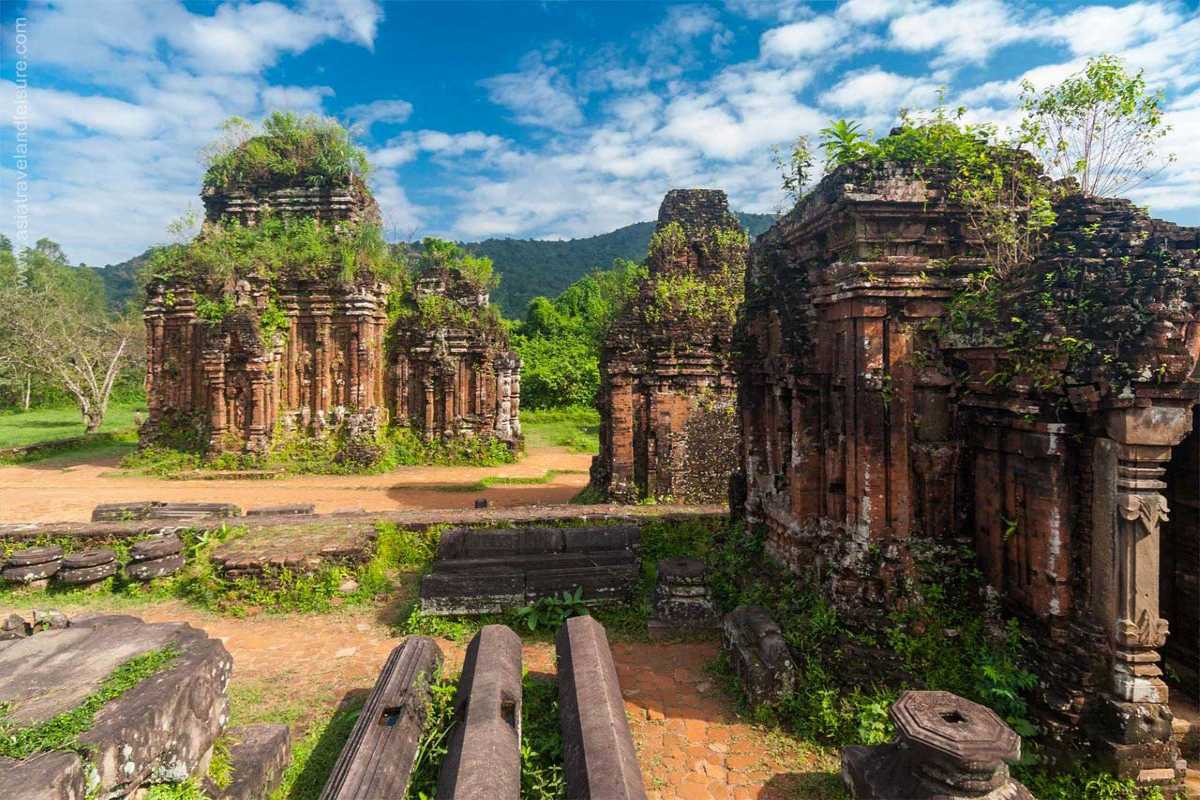
Opening Hours and Best Times to Visit
Knowing the My Son Sanctuary opening hours and the best times to visit helps you avoid crowds and heat, maximizing your experience. Planning your visit during optimal hours ensures comfort and better photographic opportunities.
- Opening Hours: Generally open daily from early morning to late afternoon (e.g., 7 AM to 5 PM).
- Peak Hours: Late mornings and midday often see the highest visitor numbers.
- Early Morning Visits: Offer cooler temperatures and fewer crowds.
- Late Afternoon: Soft light for photography and a more relaxed atmosphere.
Choosing the best time to visit enhances your enjoyment and connection with My Son Sanctuary.
Plan your arrival to experience My Son Sanctuary in the most comfortable and memorable way.
Seasonal Considerations and Weather Tips
The climate around My Son Sanctuary varies seasonally, affecting travel conditions and visitor comfort. Understanding these patterns allows you to pack appropriately and schedule your visit wisely.
- Dry Season (February to August): Ideal for travel with less rain and comfortable temperatures.
- Rainy Season (September to January): Frequent showers may disrupt plans; bring rain gear.
- Temperature: Generally warm year-round, with midday heat requiring sun protection.
- Packing Tips: Include sunscreen, hat, insect repellent, water bottle, and light clothing.
Being prepared for seasonal weather conditions helps you enjoy My Son Sanctuary fully and safely.
Adapt your packing to the season for a hassle-free visit to My Son Sanctuary.
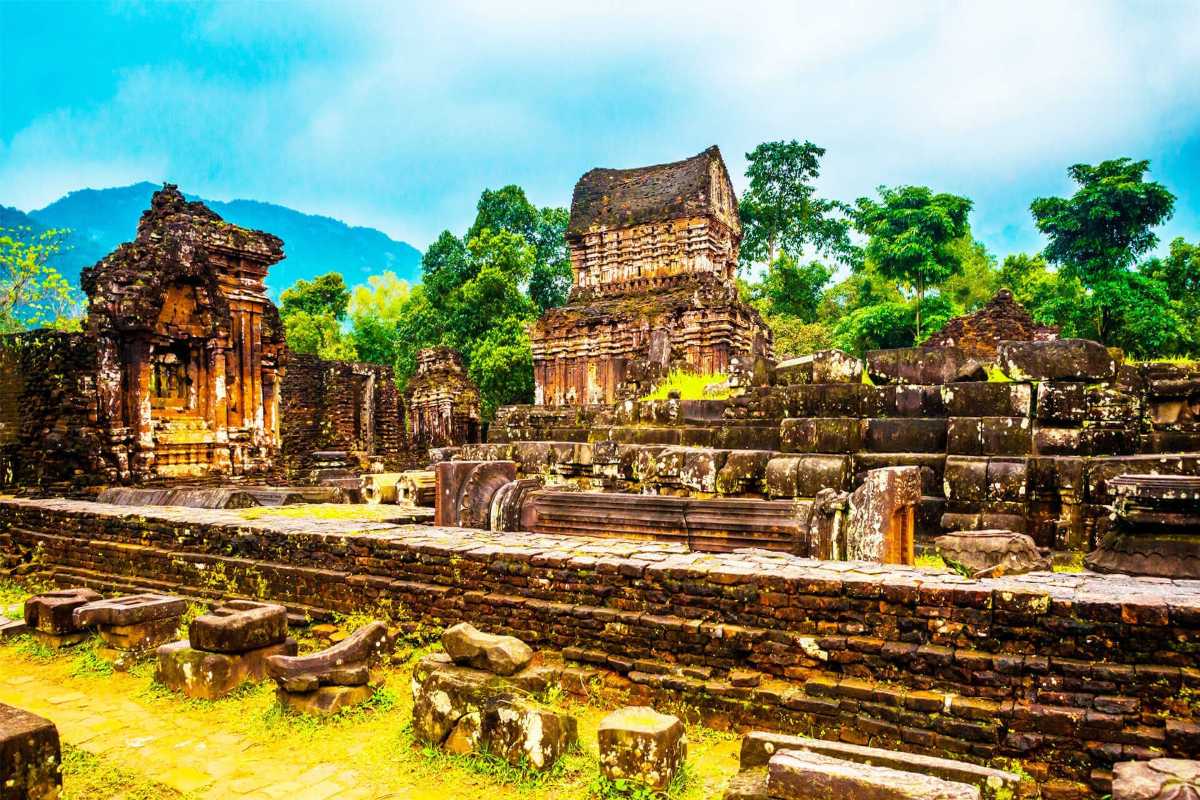
On-site Facilities and Visitor Services
Visitors to My Son Sanctuary can expect a range of facilities and services designed to make their visit comfortable and informative. Understanding what amenities are available and the types of tours offered helps travelers prepare appropriately and enhances their overall experience.
Knowing about visitor support and conveniences ensures you can focus on enjoying the cultural and historical richness of My Son Sanctuary.
Plan ahead to make the most of the on-site facilities during your visit to My Son Sanctuary.
Guided Tours vs. Self-Guided Visits
When visiting My Son Sanctuary, you can choose between guided tours and self-guided visits based on your preferences for information and flexibility.
- Guided Tours: Provide expert commentary, structured itineraries, and easy logistics; ideal for first-time visitors seeking deep historical context.
- Self-Guided Visits: Offer freedom to explore at your own pace; require preparation such as maps or audio guides for full understanding.
- Pros of Guided Tours: In-depth knowledge, hassle-free planning, social interaction.
- Cons of Guided Tours: Less flexibility, fixed schedules, possible larger groups.
- Pros of Self-Guided Visits: Personal exploration, adaptable timing, privacy.
- Cons of Self-Guided Visits: Risk of missing details, navigation challenges.
Choosing the right visit style helps you tailor your My Son Sanctuary experience to your interests and travel style.
Decide on the visit mode that best suits your preferences to enhance your time at My Son Sanctuary.
Amenities Including Restrooms and Food Options
My Son Sanctuary offers essential visitor amenities to ensure a comfortable stay during your exploration.
- Restroom Availability: Clean facilities located near the entrance and visitor center.
- Food Stalls: Small vendors offering snacks, drinks, and light refreshments at the site entrance.
- Souvenir Shops: Various stalls selling local handicrafts, postcards, and memorabilia.
- Audio Guides: Available for rent to support self-guided tours with detailed explanations.
- Water Stations: Access to drinking water to stay hydrated during your visit.
These amenities provide convenient support so you can focus on enjoying the cultural and historical wonders of My Son Sanctuary.
Utilize the available facilities to make your visit to My Son Sanctuary both pleasant and practical.

Things to Do at My Son Sanctuary
My Son Sanctuary offers a rich array of activities that invite visitors to fully engage with its historical, cultural, and natural features. Exploring ancient ruins, attending Cham cultural performances, and enjoying peaceful nature walks all contribute to a memorable visit. This section inspires you to discover meaningful experiences that enhance your understanding and appreciation of this extraordinary site.
Plan your activities carefully to make the most of your time at My Son Sanctuary and deepen your connection with its heritage.
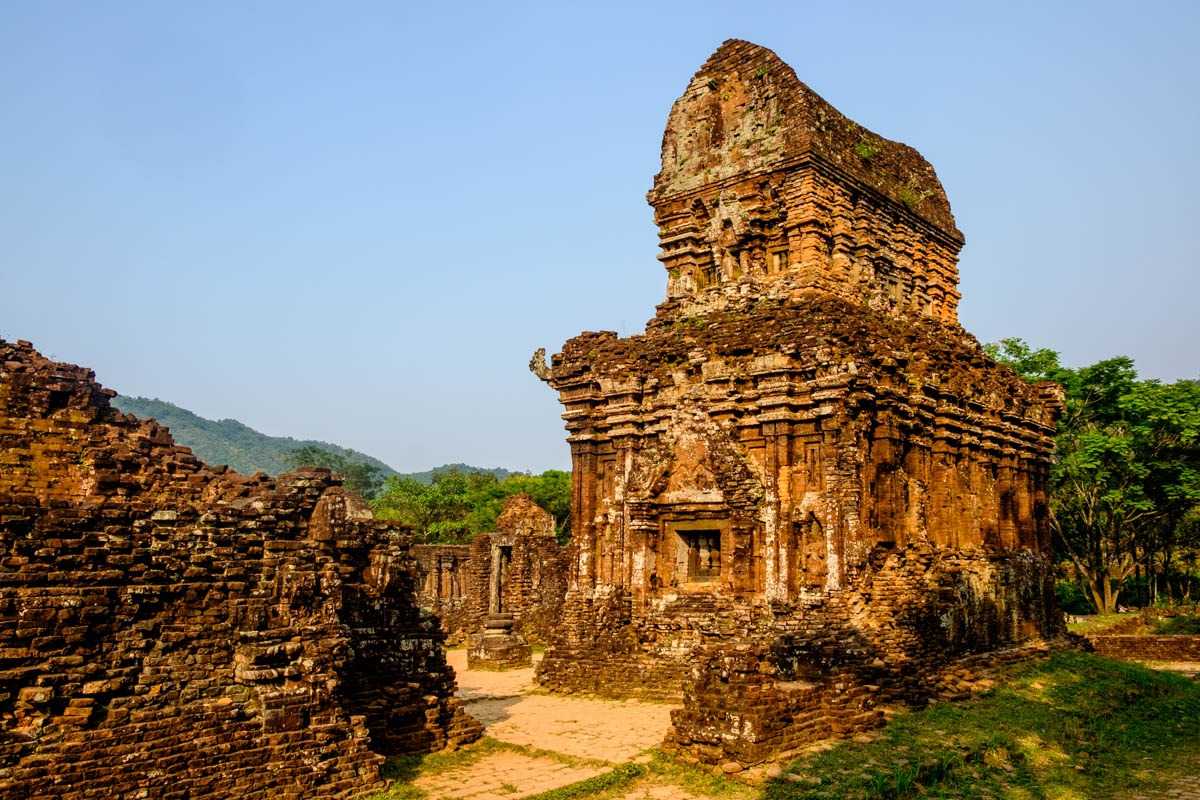
Exploring the Ruins
Exploring the ruins at My Son Sanctuary involves visiting key temple clusters connected by well-marked walking paths. This guided route helps visitors observe architectural details and appreciate the site’s layout, revealing the spiritual heart of the ancient Champa Kingdom.
Start at the main entrance and follow the path through groups of temples, noting the intricate brickwork and sandstone carvings that exemplify Cham craftsmanship.
Navigating the ruins with awareness of the significant clusters enriches your visit to My Son Sanctuary.

Attending Cham Cultural Performances
Traditional Cham dance and music performances held near My Son Sanctuary provide insight into the living culture behind the ancient ruins. These events showcase rituals, costumes, and music that preserve Cham heritage, typically scheduled during festivals or special occasions.
Visitors can attend these performances to experience the spiritual and artistic expressions that complement the historical site.
Participate in cultural events to deepen your appreciation of My Son Sanctuary’s vibrant traditions.

Photography and Nature Walks
Beyond the temples, My Son Sanctuary offers stunning natural surroundings ideal for photography and leisurely walks. Recommended viewpoints provide opportunities to capture panoramic scenes of temple clusters framed by lush jungle and mountains.
Taking time to enjoy the peaceful environment enhances your visit, allowing a connection with the site's natural beauty.
Use these photography and nature tips to capture and savor the tranquil atmosphere of My Son Sanctuary.

Educational and Interpretative Activities
The visitor center at My Son Sanctuary offers educational resources such as exhibits, interpretive signs, and local guides. These tools help deepen understanding of the site’s history, architecture, and cultural significance.
Engaging with guided tours or self-guided materials enhances your knowledge and appreciation of the sanctuary.
Take advantage of educational activities to enrich your experience at My Son Sanctuary.

Beyond the Temples: Exploring the My Son Landscape
The surroundings of My Son Sanctuary offer more than ancient ruins; the natural environment enriches your visit with scenic beauty and a connection to local life. This section highlights alternative experiences like river cruises on the Thu Bon River and the diverse flora and fauna that thrive near the sanctuary, inviting a deeper appreciation for the site’s environmental context.
Explore beyond the temples to fully embrace the natural and cultural richness of My Son Sanctuary.

The Thu Bon River Approach: A Scenic Journey
Taking a boat along the Thu Bon River presents a tranquil and picturesque way to approach My Son Sanctuary. This scenic journey offers glimpses of local villages, lush landscapes, and the gentle rhythm of rural life, making the trip as memorable as the destination itself.
As the boat glides through the calm waters, the surrounding environment invites reflection and anticipation, setting a serene tone for your visit to My Son Sanctuary.
Experience the beauty and cultural immersion of the Thu Bon River boat tour for a unique perspective on My Son Sanctuary.
Chloe's Serene River Cruise
My plan for My Son Sanctuary was to go early, explore the ruins thoroughly, and then head straight back to Hoi An for lunch. But then, my guesthouse host suggested adding a river cruise for the return trip, and something about the idea of swapping a noisy bus for a peaceful boat ride immediately appealed to me. It turned out to be one of the best spontaneous decisions of my entire trip.
After the intense heat and historical immersion of My Son, stepping onto the wooden longtail boat felt like slipping into a cool, refreshing dream. The sun was still high, but out on the Thu Bon River, a gentle breeze swept across the water, instantly lifting the day's accumulated heat and dust from my skin. The rhythmic chug-chug-chug of the small engine was a soothing lullaby, a stark contrast to the buzzing motorbikes and crowded pathways of the morning.
As we slowly pulled away from the riverbank near My Son, the landscape began to transform. The dense jungle that had embraced the ancient temples gradually gave way to sprawling rice paddies, shimmering emerald green under the sun. Water buffalo, dark, majestic shapes, grazed lazily in the distance, occasionally lifting their heads to watch us pass. Small, rustic houses on stilts dotted the riverbanks, their reflections wavering in the placid water.
The air was filled with a different set of scents now – the fresh, damp smell of the river, mingled with the faint, sweet perfume of blossoming water lilies. I leaned back against the wooden railing, my camera mostly forgotten in my lap, choosing instead to simply be. I watched local fishermen expertly cast their nets, their movements fluid and timeless. Children waved enthusiastically from the riverbank, their laughter echoing across the water. It was a glimpse into authentic Vietnamese rural life, a serene tableau unfolding before my eyes.
The journey was leisurely, stretching out for what felt like just the right amount of time – long enough to truly unwind, but not so long that boredom set in. As we neared Hoi An, the river gradually widened, and the landscape became more populated, hinting at the bustling town ahead. The sun began its slow descent, casting a warm, golden glow across the water, turning the reflections into liquid gold. The feeling of anticipation for Hoi An's charming lanterns and delicious food began to build, but it was a gentle, relaxed anticipation, not the hurried rush of a bus ride.
For anyone visiting My Son Sanctuary, especially if you've endured the midday heat, I cannot recommend the river cruise option enough. It’s a sensory balm, a beautiful transition from the historical intensity of the ruins to the vibrant charm of Hoi An. It offers a unique, tranquil perspective on the Vietnamese countryside that you simply won't get from the road. Many tours offer it as an add-on, or you can often arrange it with local boat owners near the sanctuary's exit. Just sit back, let the breeze cool your skin, and allow the gentle rhythm of the Thu Bon River to wash away any lingering travel fatigue. It was the perfect, serene end to an unforgettable day.

Flora and Fauna Around the Sanctuary
The area surrounding My Son Sanctuary is rich in tropical vegetation and diverse wildlife, contributing to the site’s unique atmosphere. This natural environment not only frames the ancient ruins but also supports important biodiversity that deserves respect and protection.
Visitors can observe native plants and animals that thrive in the sanctuary’s forests while enjoying the peaceful ambiance.
- Tropical Vegetation: Dense jungle growth with a variety of native trees and plants providing habitat and shade.
- Native Species: Birds, butterflies, and small mammals commonly spotted during walks around the sanctuary.
- Environmental Protection: Ongoing efforts aim to preserve the fragile ecosystem surrounding the cultural site.
Appreciating the flora and fauna near My Son Sanctuary enriches your visit and supports conservation awareness.
Respect the natural environment to help sustain the beauty and biodiversity of My Son Sanctuary for future generations.

Local Cuisine & Dining Options Near My Son
Visiting My Son Sanctuary offers an opportunity to enjoy authentic Vietnamese flavors close to this cultural treasure. Whether you prefer simple eateries at the sanctuary entrance or quality local restaurants in nearby Hoi An and Da Nang, you will find dining options that complement your travel experience.
Plan your meals thoughtfully to savor regional specialties and refuel comfortably during your visit to My Son Sanctuary.

Simple Eateries at the Sanctuary Entrance
Food stalls and basic restaurants near the entrance of My Son Sanctuary provide convenient options for quick bites and light refreshments. These establishments typically serve affordable local snacks and simple meals, perfect for travelers seeking convenience without venturing far.
- Basic Restaurants: Small, family-run spots offering Vietnamese staples like bánh mì and pho.
- Local Snacks: Fresh fruit, spring rolls, and other portable treats ideal for a quick energy boost.
- Affordable Meals: Budget-friendly options suitable for short stops during the day.
These eateries cater to visitors wanting to enjoy a practical and tasty meal before or after exploring My Son Sanctuary.
Take advantage of these simple food stalls for a quick and authentic dining experience near My Son Sanctuary.

Recommended Local Restaurants (Hoi An/Da Nang Connection)
For a more immersive dining experience, Hoi An and Da Nang offer renowned restaurants featuring traditional Vietnamese dishes and regional specialties. Visitors can enjoy vibrant atmospheres alongside expertly prepared meals that highlight local culinary heritage.
Discover popular dishes such as cao lầu noodles in Hoi An or seafood delicacies in Da Nang, providing a delicious conclusion to your cultural visit.
Explore local eateries near My Son Sanctuary to enrich your journey with unforgettable flavors and ambiance.
Mark's Post-My Son Noodle Discovery
After exploring the ancient wonders of My Son Sanctuary under the relentless Vietnamese sun, all I could think about was finding a cool, comfortable spot and something truly delicious to eat. My body was tired, my mind buzzing with images of crumbling towers and intricate carvings, and my stomach was rumbling a loud protest. As soon as our shuttle pulled back into Hoi An, my mission was clear: noodles.
I bypassed the main tourist restaurants, knowing I wanted something authentic, something that tasted like real Vietnam. I wandered down a narrow alleyway, drawn by the clatter of chopsticks and the murmur of local voices. That’s when I stumbled upon it: a tiny, unassuming eatery, just a few plastic tables and stools spilled out onto the pavement, a lone woman expertly tending to bubbling pots over a smoky charcoal stove. The air was thick with the most incredible aromas – savory broth, aromatic herbs, and something subtly spicy. This, I knew instantly, was the place.
I pointed to a bowl of what looked like Mi Quang, a regional specialty I'd heard about but hadn't yet tried. The woman, with a warm smile, quickly assembled my dish. First, a bed of flat, turmeric-stained noodles, vibrant yellow. Then, she ladled over a small amount of rich, flavorful broth – just enough to coat the noodles, not drown them. Next came tender slices of pork and shrimp, a scattering of roasted peanuts for crunch, fresh herbs like basil and mint, and a handful of crispy rice crackers perched on top. The colors alone were a feast for the eyes.
The first bite was an explosion of flavors and textures. The noodles were perfectly chewy, absorbing the slight sweetness and umami of the broth. The peanuts added a satisfying crunch, contrasting beautifully with the soft pork and succulent shrimp. But it was the broth that truly sang – deeply savory with a hint of spice, it was comforting and invigorating all at once. And that crispy rice cracker? Breaking it into pieces and stirring it into the noodles added an incredible texture, soaking up the broth and providing bursts of starchy goodness.
I ate slowly, savoring every mouthful, the simple perfection of the dish washing away the last remnants of the day's heat and fatigue. The humble setting, the sound of local chatter, and the incredible flavors made it more than just a meal; it was an authentic cultural immersion, a delicious reward after a morning steeped in history. I even got a nod of approval from a local man at the next table, who seemed to appreciate my enthusiastic slurping.
This unexpected noodle discovery taught me a valuable lesson: the true essence of a travel experience often extends beyond the main attractions. It’s in these unplanned culinary adventures, the moments of connection with local life, that a destination truly comes alive. So, after your incredible journey through My Son Sanctuary, don't just grab the first easy meal you see. Take a moment, wander off the main drag, and follow your nose. You might just find your own "Mark's Post-My Son Noodle Discovery," a simple bowl of local perfection that becomes an unforgettable highlight of your trip. Your taste buds, and your weary explorer's soul, will thank you for it.

Nearby Attractions and Complementary Experiences
Extending your trip beyond My Son Sanctuary allows you to immerse yourself in the rich cultural and natural heritage of Central Vietnam. The region offers fascinating sites like Hội An Ancient Town, Cham Museum in Da Nang, the Marble Mountains, and the charming Tra Que Vegetable Village. These attractions complement your visit by offering diverse experiences from historic streets to spiritual landscapes and rural life.
Discovering these nearby attractions enhances your itinerary and deepens your appreciation of local history and culture around My Son Sanctuary.
Plan to include these enriching destinations to make the most of your journey in this remarkable region.

Hội An Ancient Town
Hội An Ancient Town lies close to My Son Sanctuary and is well worth combining in your travel plans. This UNESCO World Heritage site offers a picturesque blend of historic architecture, vibrant lantern festivals, and tailor shops alongside a renowned culinary scene.
Walking the quaint streets of Hội An lets you experience centuries of cultural heritage, making it a perfect complement to the ancient ruins at My Son Sanctuary.
Consider exploring Hội An for a fuller cultural immersion during your trip.

Cham Museum in Da Nang
The Cham Museum in Da Nang holds an extensive collection of artifacts that provide valuable insights into the Cham civilization’s artistic and religious traditions. Visiting the museum before or after My Son Sanctuary enriches understanding of the historical context and cultural significance of the ruins.
Explore exhibits featuring sculptures, pottery, and ancient relics that tell the story of the Cham people’s heritage.
Include a visit to the Cham Museum to deepen your appreciation of the region’s history.

Marble Mountains
The Marble Mountains, located near My Son Sanctuary, offer a unique natural and spiritual experience. These limestone hills are dotted with Buddhist grottoes, pagodas, and scenic viewpoints, making them a popular destination for travelers interested in nature and spirituality.
Climbing the mountains rewards visitors with panoramic views and a peaceful atmosphere that complements the cultural exploration at My Son Sanctuary.
Adding the Marble Mountains to your itinerary enriches the overall travel experience with nature and heritage.

Tra Que Vegetable Village
For a taste of rural life and culinary culture, Tra Que Vegetable Village near My Son Sanctuary offers interactive experiences such as cooking classes and farm tours. This village is famed for its organic herbs and traditional Vietnamese farming methods.
Visitors can participate in hands-on activities and savor freshly prepared local dishes, connecting with the agricultural roots of the region.
Visiting Tra Que Vegetable Village provides a refreshing contrast and complements the historical exploration of My Son Sanctuary.

Conservation and Sustainability Efforts
Preserving My Son Sanctuary is essential to maintaining its cultural and historical legacy for future generations. This section explores ongoing restoration projects, the role of international collaboration, and strategies for managing the impact of visitors. It also highlights how local communities actively participate in conservation and offers practical tips for responsible tourism to protect this invaluable site.
Understanding these efforts helps visitors appreciate the challenges of heritage preservation and encourages respectful, sustainable travel behaviors that support the long-term health of My Son Sanctuary.
Plan your visit with care to contribute positively to this treasured cultural landmark.

Restoration Projects and International Collaboration
Numerous restoration projects at My Son Sanctuary are led by Vietnamese authorities in partnership with international conservation teams. These initiatives focus on repairing damaged structures, using advanced preservation technologies, and ensuring that interventions respect the site's authenticity and cultural significance.
UNESCO’s involvement has been critical in securing funding and technical expertise, enabling ongoing cultural heritage projects that balance preservation with tourism demands.
Learning about these collaborative efforts deepens appreciation for the meticulous work preserving My Son Sanctuary.

Visitor Impact Management
To protect My Son Sanctuary from damage due to increasing tourism, strict visitor management measures are in place. These include designated pathways to prevent erosion, clear visitor guidelines about touching or climbing ruins, and crowd control strategies to maintain a safe and respectful environment.
Visitors are encouraged to follow these rules diligently, helping sustain the sanctuary’s integrity and ensuring a quality experience for all.
Adhering to these guidelines supports responsible tourism and safeguards this historic site.

Community Involvement in Preservation
Local communities around My Son Sanctuary play an active role in preserving their cultural heritage. They engage in tourism-related activities such as guiding, hosting cultural events, and producing traditional crafts. These efforts generate economic benefits and foster social sustainability.
Community stewardship ensures that preservation efforts are grounded in local knowledge and respect for traditions, enriching the visitor experience with authentic cultural exchanges.
Supporting local initiatives helps maintain the vibrant heritage linked to My Son Sanctuary.

Tips for Responsible Tourism
Visitors to My Son Sanctuary can help protect the site by following simple but vital practices:
- Stick to marked pathways to avoid damaging fragile ruins
- Do not touch or climb on ancient structures
- Dispose of trash properly and avoid littering
- Support local businesses by purchasing authentic crafts and services
- Respect local customs and cultural practices
By practicing responsible tourism, you contribute to the sustainable preservation of My Son Sanctuary and ensure its beauty and significance endure.

Planning Your Trip: Additional Recommendations
Planning your visit to My Son Sanctuary requires careful preparation to ensure a comfortable and memorable experience. This section offers practical advice on where to stay, what to pack, safety precautions, and suggested itineraries that combine My Son Sanctuary with other attractions in Central Vietnam. Proper planning helps you enjoy the site fully while staying safe and prepared.
Make the most of your trip by considering these essential recommendations tailored for every traveler.

Where to Stay Near My Son Sanctuary
Choosing the right accommodation is key to a smooth visit to My Son Sanctuary. Most travelers prefer basing themselves in Hội An, known for its charming guesthouses, boutique hotels, and homestays that offer authentic local experiences. For those seeking more urban amenities, Da Nang provides larger hotels and resorts just a short drive away. Selecting your lodging depends on your preference for atmosphere, convenience, and budget.
Exploring these options allows you to find the perfect place to rest before or after your My Son Sanctuary adventure.

Packing Essentials and Preparation
Packing smart for your trip to My Son Sanctuary is vital to comfort and enjoyment. Essentials include sturdy, comfortable shoes suitable for uneven terrain, lightweight breathable clothing to combat the heat, a wide-brimmed hat, and reliable sunscreen to protect from strong sun exposure. Don’t forget insect repellent, a refillable water bottle to stay hydrated, and camera gear to capture your journey. A small backpack helps carry your items conveniently during walks.
Being well-prepared ensures you can focus on experiencing the sanctuary’s beauty without distractions.

Safety and Health Advice
Your safety at My Son Sanctuary and throughout Vietnam is paramount. Stay hydrated, especially during the hot midday hours, and watch your step on uneven, sometimes slippery paths. Wearing appropriate footwear reduces the risk of injury. It’s wise to carry basic travel insurance for emergencies. Follow local health advisories and respect site regulations to ensure a safe, enjoyable visit.
By following these tips, you protect yourself and contribute to a respectful tourist environment.

Suggested Itineraries Combining My Son with Other Destinations
Enhance your trip by combining a visit to My Son Sanctuary with other iconic sites in Central Vietnam. A 1-day itinerary might include a morning tour of My Son Sanctuary followed by an afternoon exploring Hội An Ancient Town. For a 2-day itinerary, add a visit to the Cham Museum in Da Nang or the Marble Mountains. A 3-day plan allows for deeper immersion, including local villages like Tra Que Vegetable Village and regional cultural experiences.
Tailoring your itinerary helps you balance history, culture, and natural beauty for a fulfilling journey.

Conclusion
My Son Sanctuary stands as a profound historical and cultural treasure, embodying the spiritual legacy of the Cham civilization and Southeast Asia’s rich heritage. Visiting this remarkable site offers not only a glimpse into an ancient world but also a responsibility to preserve its delicate beauty for future generations. Embracing respectful travel practices helps ensure that My Son Sanctuary remains a source of inspiration and learning.
Plan your visit thoughtfully to honor the site’s significance and support sustainable tourism efforts.

Summary of My Son Sanctuary’s Importance
My Son Sanctuary is a unique convergence of religious, political, and cultural history. As the spiritual heart of the Champa Kingdom, it showcases extraordinary architectural achievements and artistic expressions that reflect centuries of devotion. Recognized globally for its archaeological and spiritual significance, the site preserves invaluable insights into Southeast Asia’s past.
This historical treasure invites visitors to appreciate its cultural legacy and ongoing importance.

Encouragement for Responsible and Enriching Visits
Visiting My Son Sanctuary offers an opportunity to connect deeply with an ancient civilization, but it also requires mindful behavior. Respecting site guidelines, minimizing environmental impact, and supporting local communities contribute to the sanctuary’s preservation. By choosing responsible tourism, you help protect this sacred place and foster a positive experience for all.
Embrace your role as a thoughtful traveler and make your visit to My Son Sanctuary both enriching and sustainable.
Nguyễn Việt Hưng
Faqs
My Son Sanctuary is a collection of ancient Hindu temple ruins built by the Cham civilization between the 4th and 14th centuries. It is an archaeological site of great historical and cultural importance in Vietnam, recognized as a UNESCO World Heritage Site.
- It served as a religious and political center for the Champa Kingdom, dedicated primarily to the god Shiva.
- The site showcases unique Cham architectural styles featuring red brickwork and intricate sandstone carvings.
- It offers insight into Southeast Asian heritage and the spiritual beliefs of a once-thriving civilization.
- My Son Sanctuary remains a vital cultural treasure that connects modern visitors to ancient history and art.
Plan your visit to My Son Sanctuary to explore its rich history and impressive ruins firsthand.
Reaching My Son Sanctuary from nearby cities like Hoi An or Da Nang is straightforward with multiple transport options available.
- From Hoi An, visitors can take a motorbike ride, taxi, private car, or join shuttle tours, with travel times around 40-60 minutes.
- From Da Nang, taxis and private cars are the most convenient, averaging 1 to 1.5 hours of travel depending on traffic.
- Shared shuttle buses and guided tours often include transportation for convenience.
- The roads leading to the site vary in condition, so prepare for some gravel and uneven surfaces.
Choose the option that best fits your schedule and comfort to enjoy a smooth journey to My Son Sanctuary.
Visitors to My Son Sanctuary are required to purchase entrance tickets to access the site.
- The standard adult ticket price is approximately 150,000 VND, with discounted rates for children and students.
- Tickets can be bought at the main entrance ticket counters or online through authorized vendors.
- Some tour packages include entrance fees, simplifying the process.
- Make sure to carry your ticket during the visit as staff may check for access authorization.
Knowing the ticket prices in advance helps you plan your visit without surprises at My Son Sanctuary.
My Son Sanctuary is open daily to the public, but timing your visit wisely can enhance your experience.
- Opening hours generally run from 7:00 AM to 5:00 PM, with last admissions around 4:30 PM.
- Early morning or late afternoon visits are ideal to avoid crowds and midday heat.
- The dry season from February to August offers the best weather for exploring the ruins comfortably.
- Avoid the rainy season, especially from September to January, when heavy showers can affect accessibility.
Plan your visit during cooler hours and favorable seasons for a more enjoyable trip to My Son Sanctuary.


